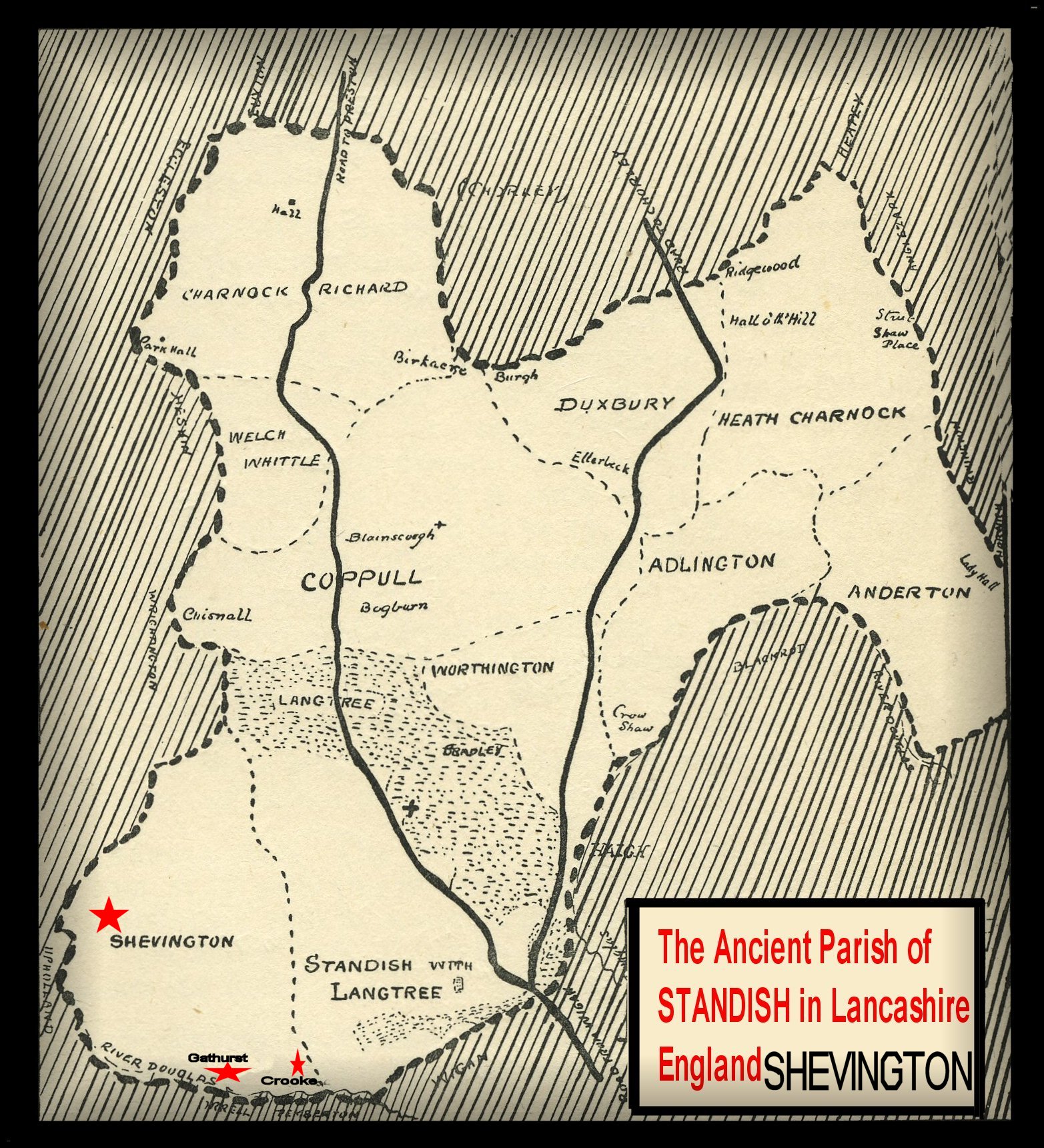
Return to - the Ancient Parish of Standish. Return to mylesstandish.info
Residents of the Manor of Shevington 1582.
The Prescott family of Shevington and the USA.
The White family of Shevington and the USA.
People and events in Shevington 1201 to 1818.
The Manor of Shevington within the -
Ancient Parish of Standish Lancashire England.

Scheuynton, 1253; Sheuington, 1277; Sewinton, 1288;
Sheuynton, 1292; the spelling with 'g' became usual about 1350.
Shevington has an area of 1,728 acres. It is bounded on the south-west by the River Douglas, on the east by the Mill
Brook and on the west by another brook, which has two small tributaries, the
Calico Brook and another, crossing the township westwards.
A road winding north and west from Wigan traverses
the southern end, passing the hamlets of Crook, Shevington and the Vale, at the
second of which it is crossed by another lane from the south. From the Vale, on
the western boundary, Back Lane goes north-east and east through the hamlet of
Shevington Moor to the village of Standish. The southern part of the township,
bordering on the Douglas, is known as Gathurst.
In 1666 the hearth tax return shows that there were eighty-six hearths chargeable. The largest house was that of Mr. Catterall, with nine hearths.
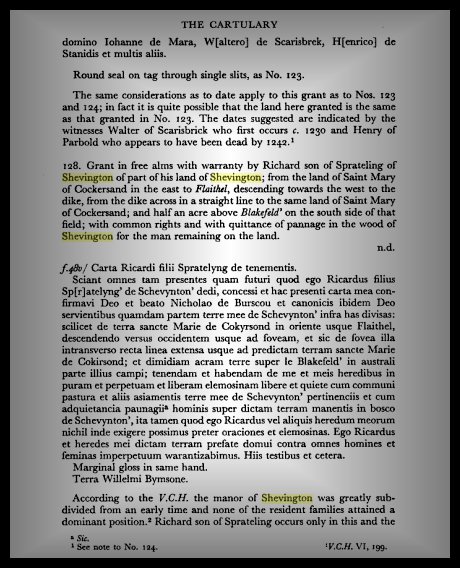
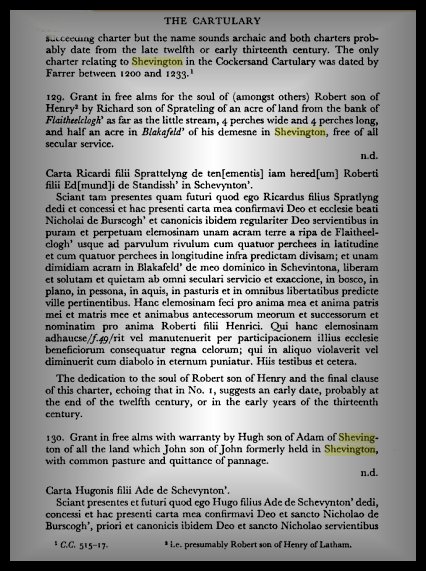
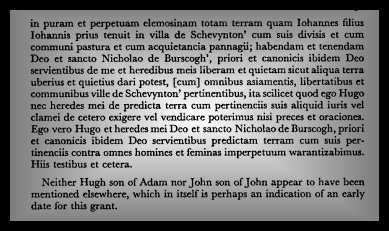
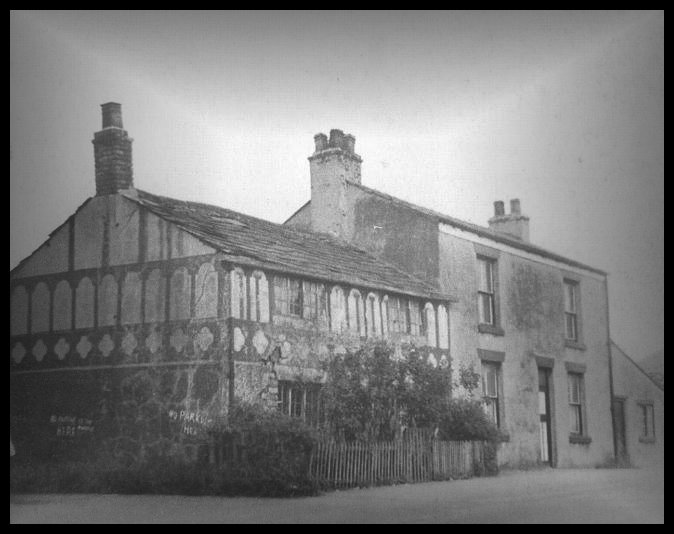
The Manor House Shevington
The manor appears to have been greatly subdivided from an early time. It appears to have been
assessed as one plough-land and to have been given by the lord of Penwortham,
of whose fee it formed part, to Randle de Marsey, and in the 17th century land in Shevington was said to be held of the lords of
Leylandshire. On the other hand the heir of Robert
Banastre in 1242 held of Penwortham the fourth part of a knight's fee in
Shevington, Charnock Richard and Welch Whittle ; the Shevington part descended to the Harringtons, and was acquired by Sir Edward Stanley Lord Mounteagle,
and the manor of Shevington was mortgaged or sold in 1574 to Alexander Rigby.
A branch of the Hulton family were possessed of the whole or most of the land in the 13th century. Crook was part of their estate. (It appears to have been alienated in parcels, for several different families are found to have held 1 or 2 oxgangs, and what remained to the Hultons descended to one Thurstan Standish.
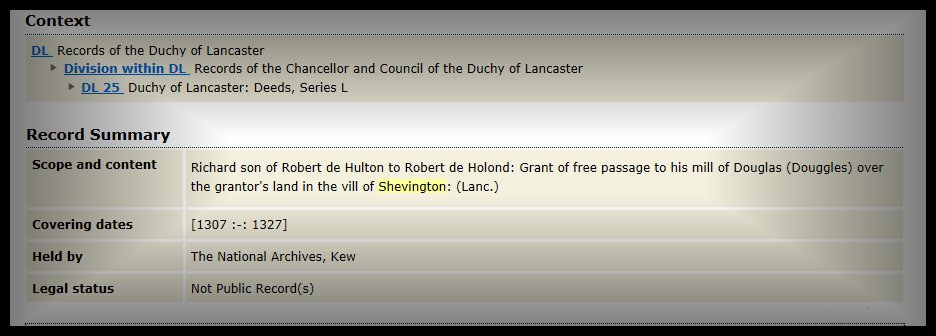
In 1562 it was acquired by Edward Standish of Standish, whose ancestors as early as 1396 are found to have held of Sir Nicholas de Harrington a fourth part of the manor.
An eighth part of the manor was early in the 14th century held by a family surnamed Witte and descended to the Faircloughs, who long remained among the more prominent residents ; it was in 1506 sold to the Heskeths. The Nevills of Hornby also held an eighth part. One family assumed the local name, but appear to have sold their estate to the Wrightingtons in 1348. Other surnames occurring in early deeds are those of Holland, Perpoint, Shuttleworth, Catterall and Worthington.
The Hospitallers had a fair estate from an early time, and Cockersand Abbey also had land, which was held of the canons by the Woodward family. In the 17th century, however, the Woodwards are stated to have held of the lords of Leylandshire. Burscough Priory long held an estate there ; their tenants at the Dissolution were James Standish of Arley and Lawrence Bimson.
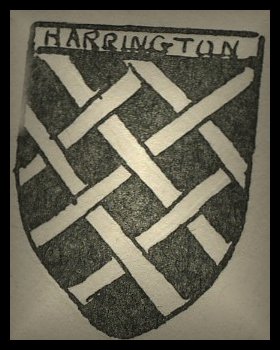
Harrington. Sable fretty argent.
From the subdivisions described it is not surprising to find that a 'manor of Shevington' has been claimed by several landowners — Standish of Standish, Chisnall, Hesketh and Dicconson of Wrightington. The Ashhursts of Dalton also held lands in the township. Sir George Stanley made purchases in 1562–4. The Langtree and Legh of Lyme families were landowners.
The landowners contributing to the subsidy of 1542–3 were Nicholas Worthington and Alexander Catterall ; Peter Catterall is named in 1564. The freeholders recorded in 1600 were Alexander Woodward, Roger Bimson and Nicholas Worthington. Edward Prescott of Shevington had his leasehold estate sequestered by the Parliament for 'delinquency' during the Civil War. The principal landowners in 1798 were Edward Standish, William Dicconson, Edward Holt and Sir Thomas Hesketh.
![]()
Residents of the Manor of Shevington 1582.
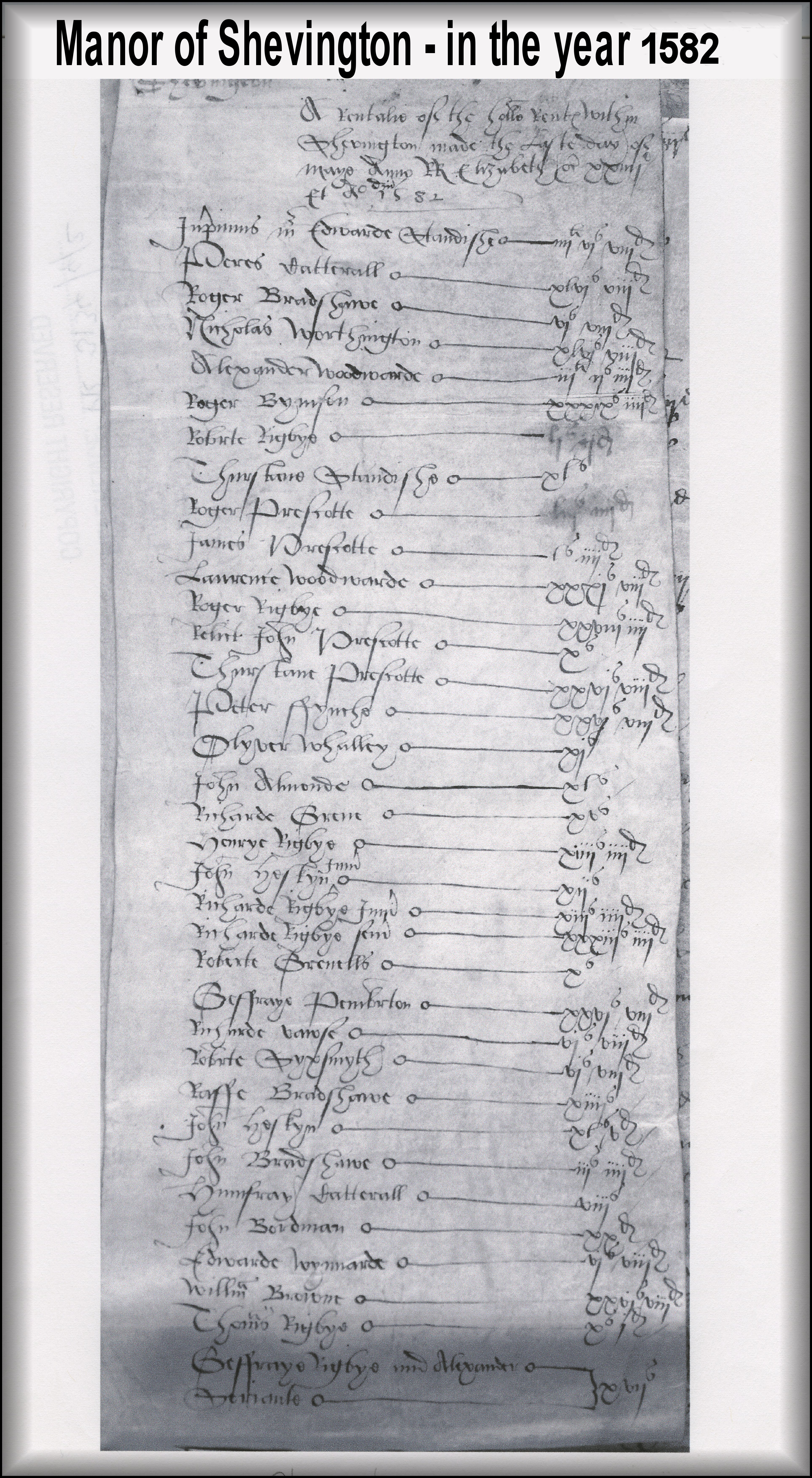
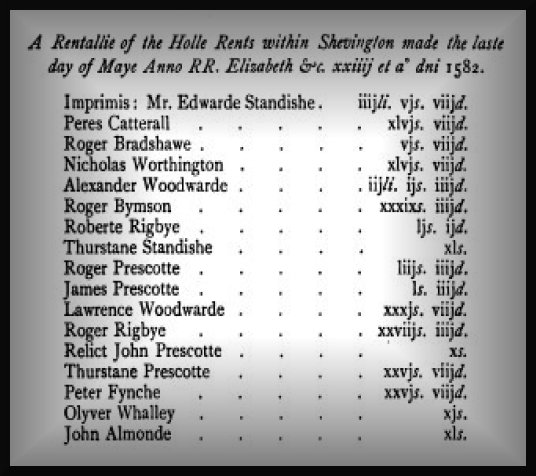
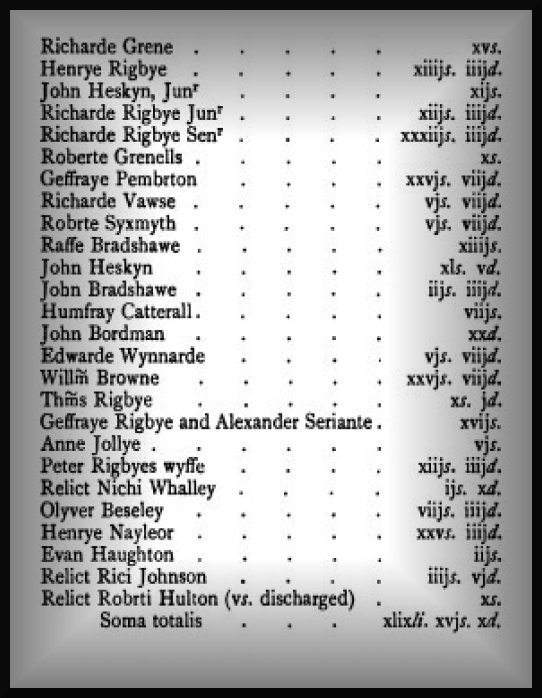
![]()
Recusants Roll in the year 1628.

![]()

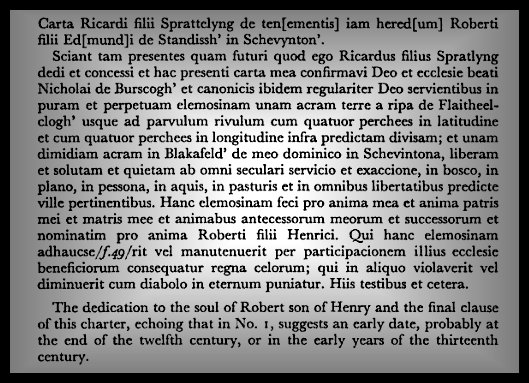

![]()
The Prescott family of Shevington and the USA.
The Prescott family of the Manor of Shevington.
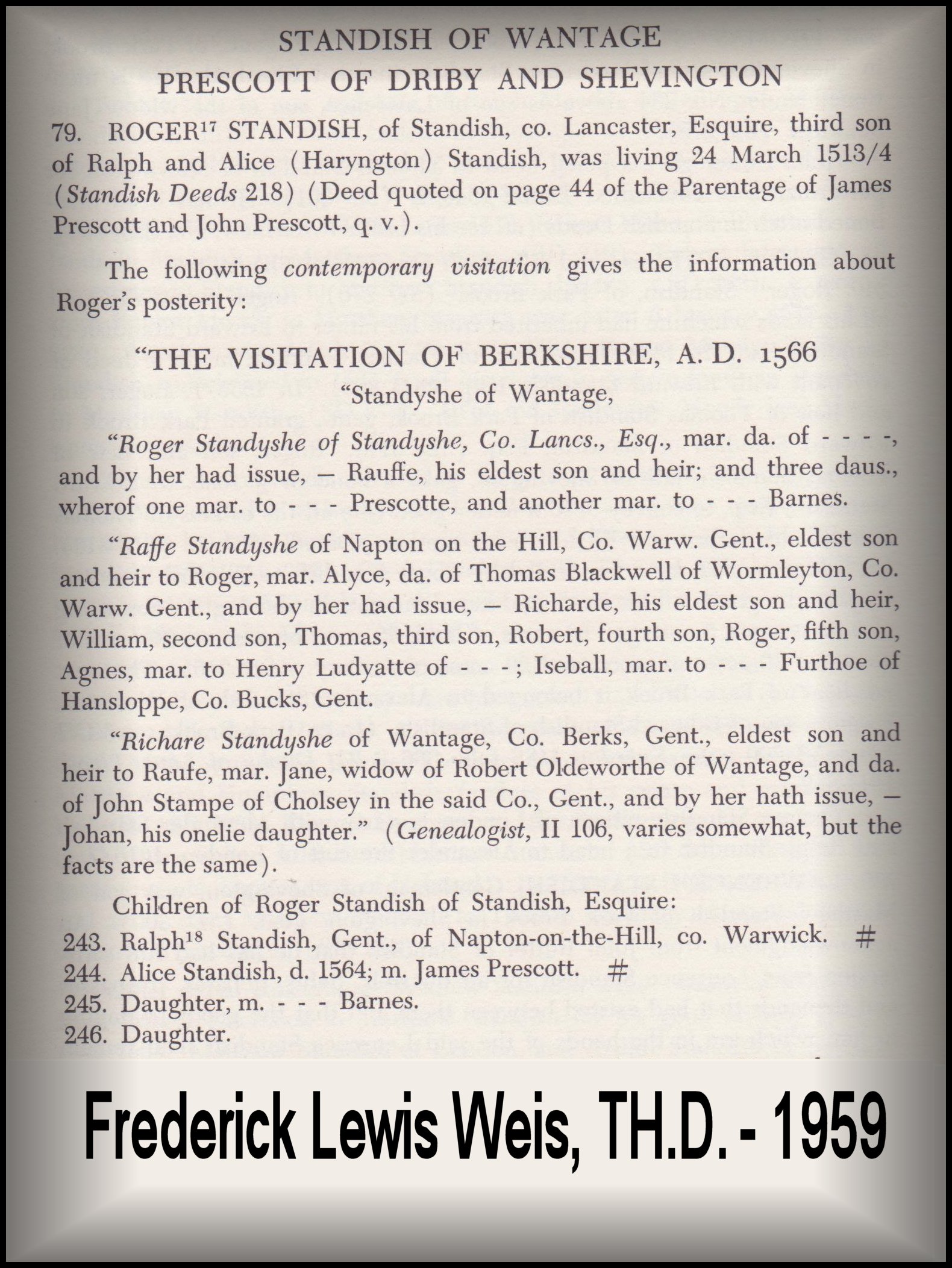
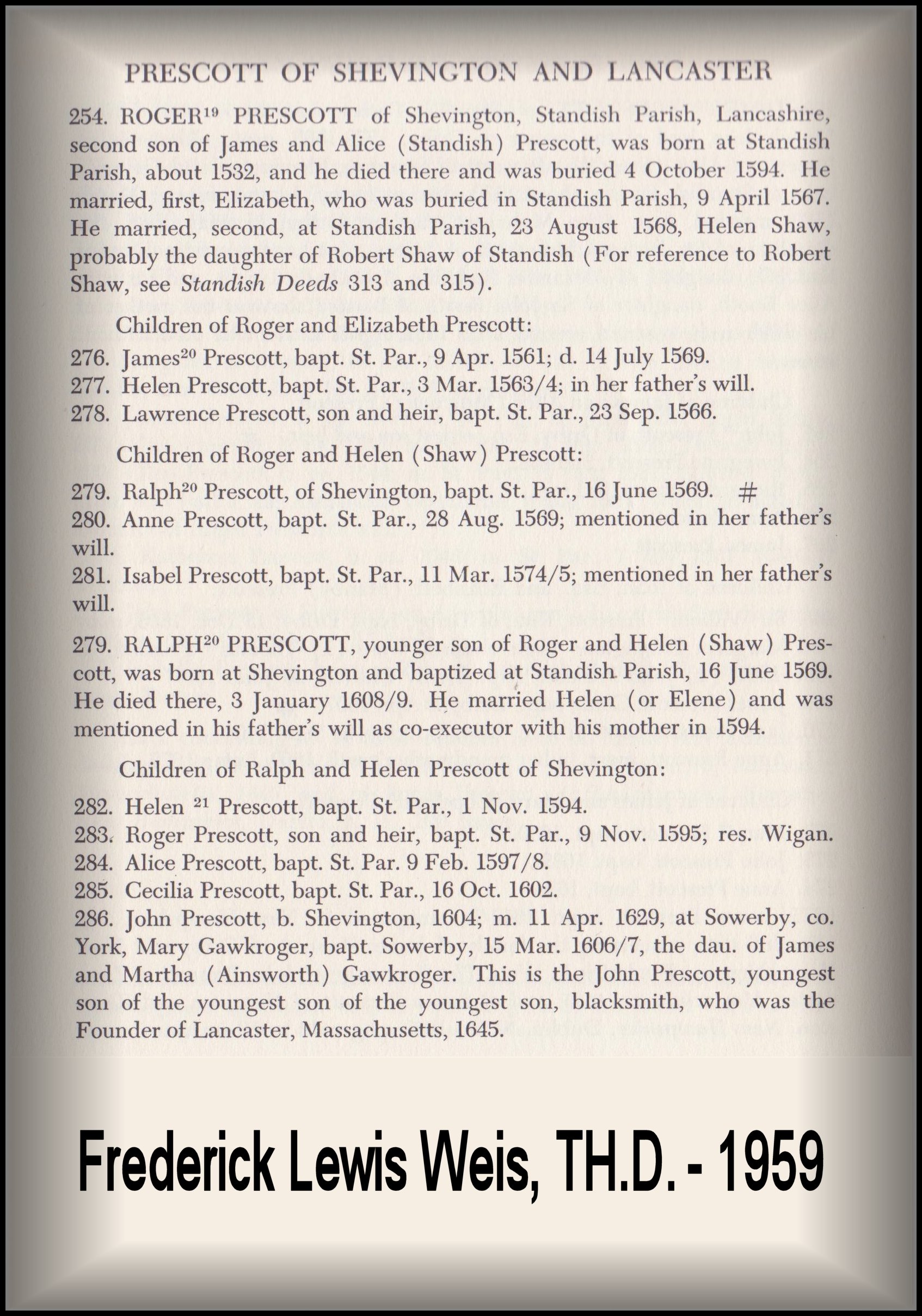
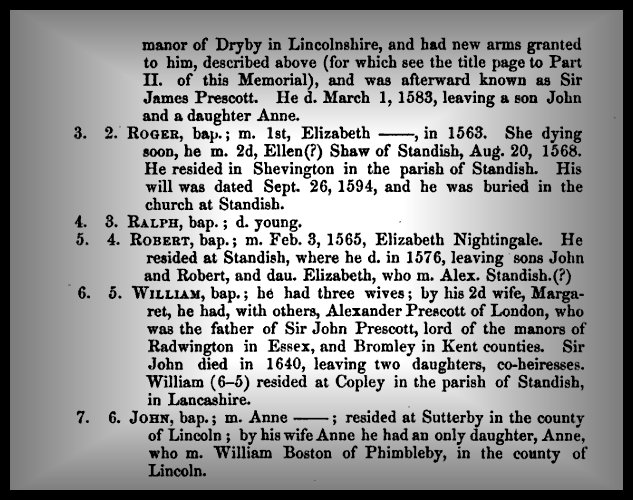
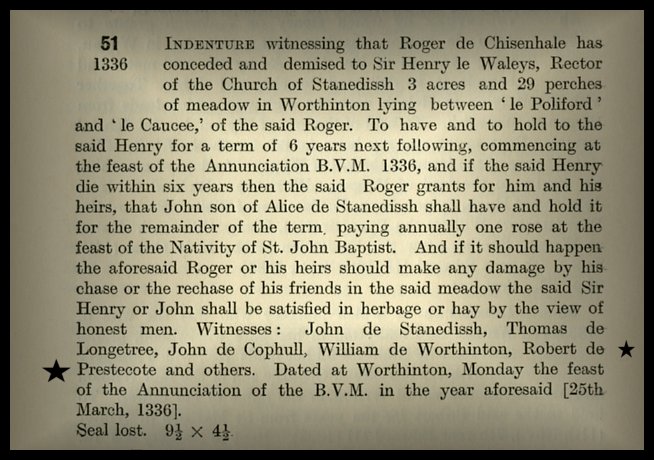

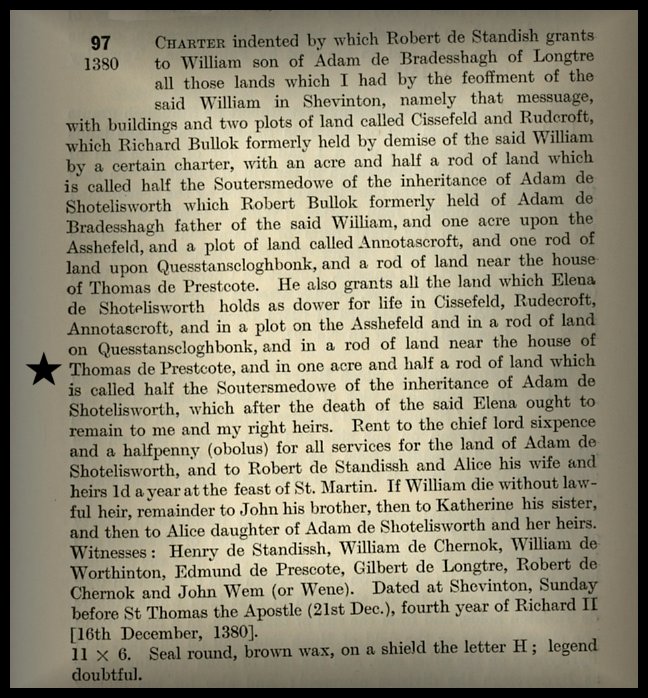

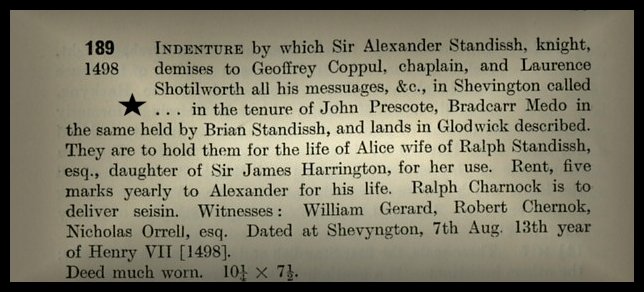
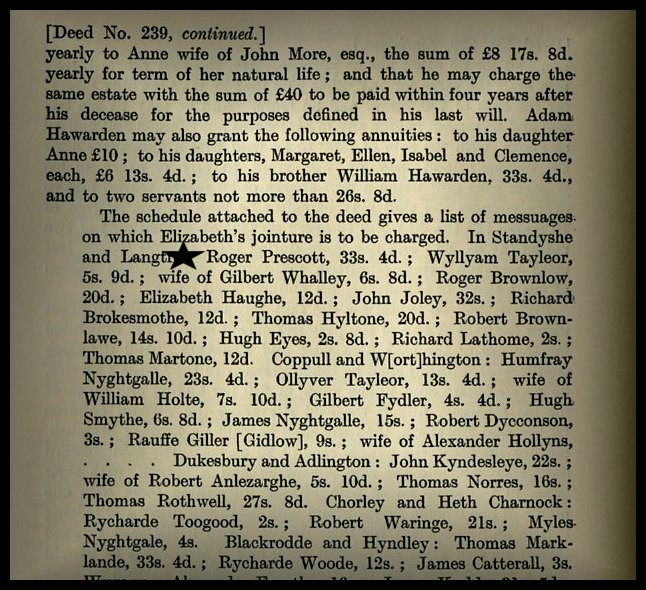
1575. - Roger Prescott second son of James Prescott and Alice Standish.


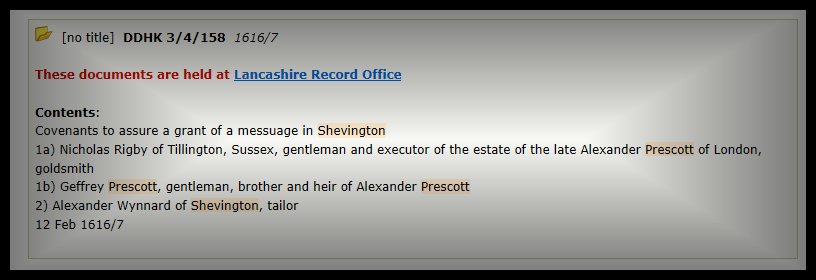



Edward Prescott of Shevington had his leasehold estate sequestered by the Parliament for 'delinquency' during the Civil War.
The Prescott family of the United States of America.

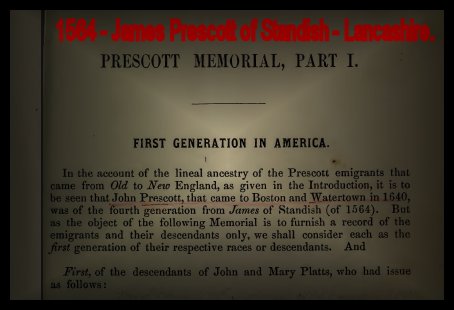
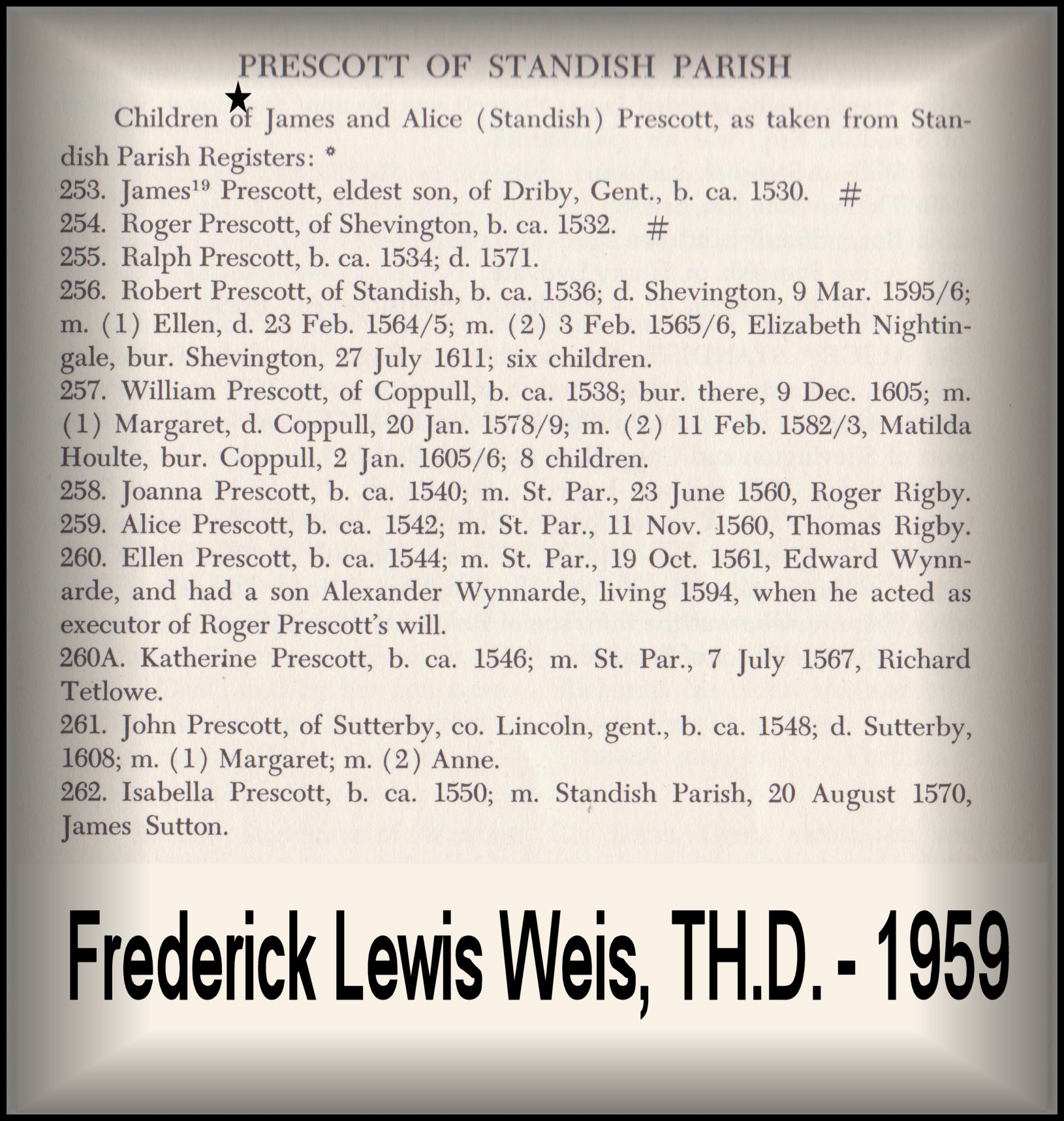
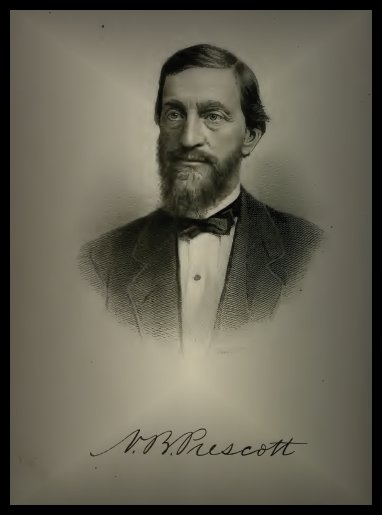
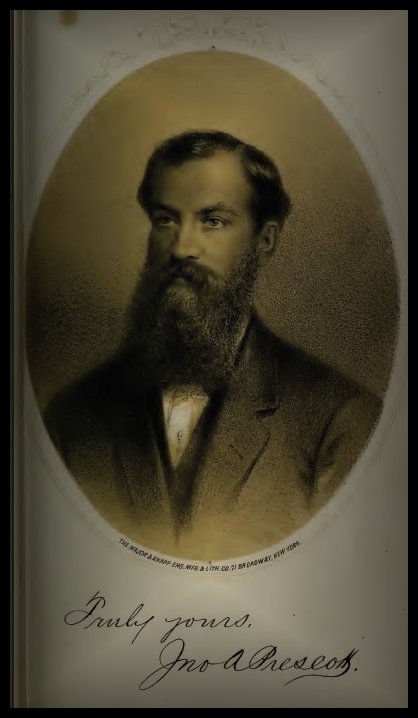
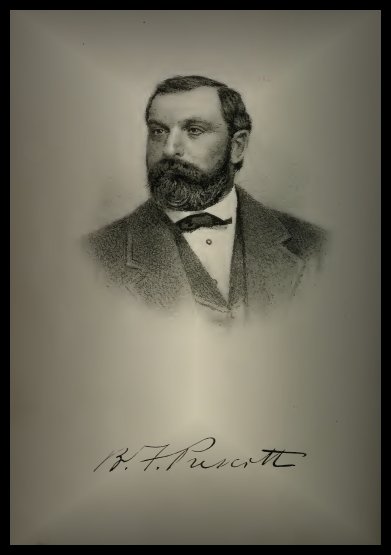
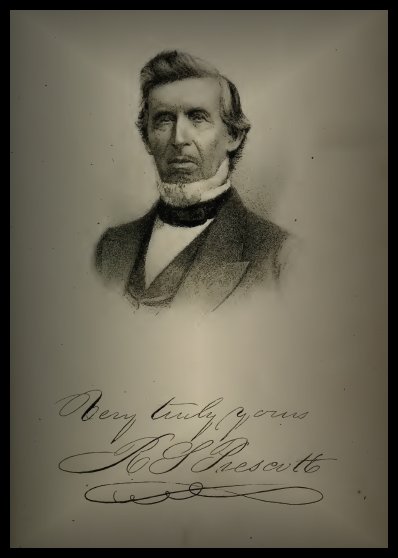
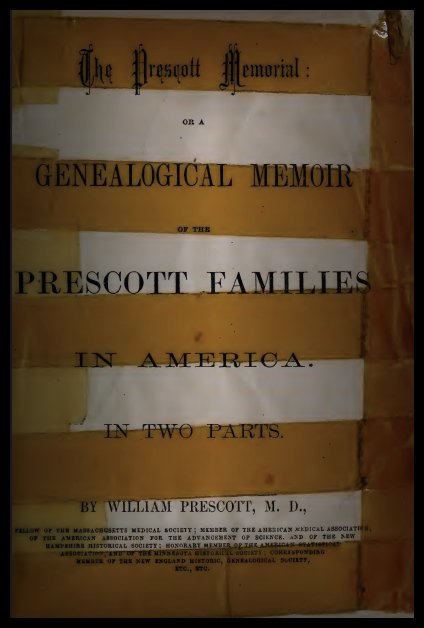
The Family history of the Prescott Family of the USA. - DOWNLOAD PDF File.
![]()
The White family of Shevington and the USA.
The White family of the Manor of Shevington.
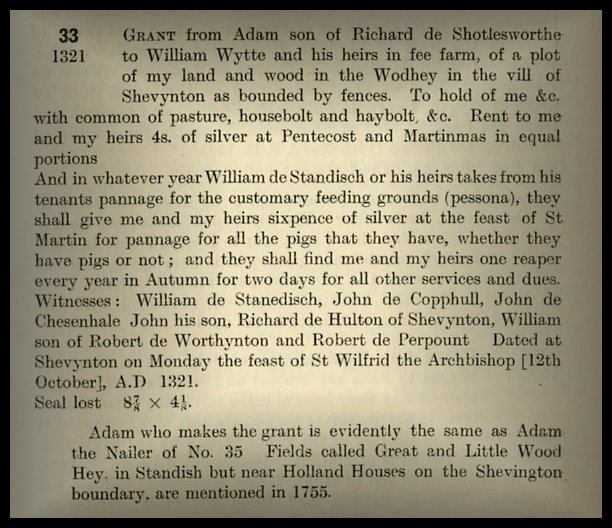
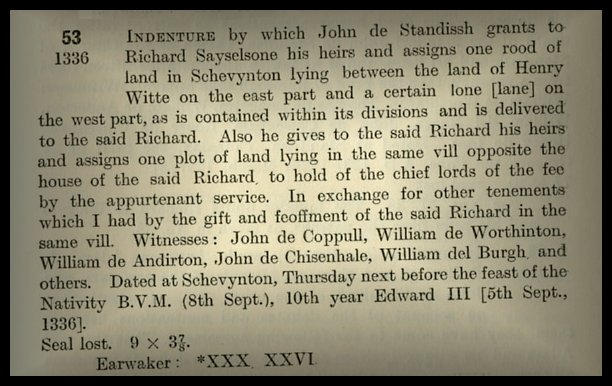
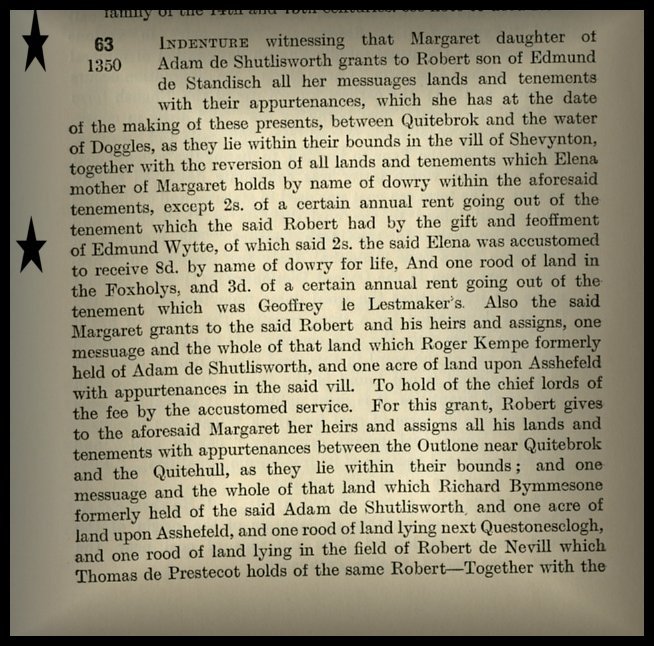
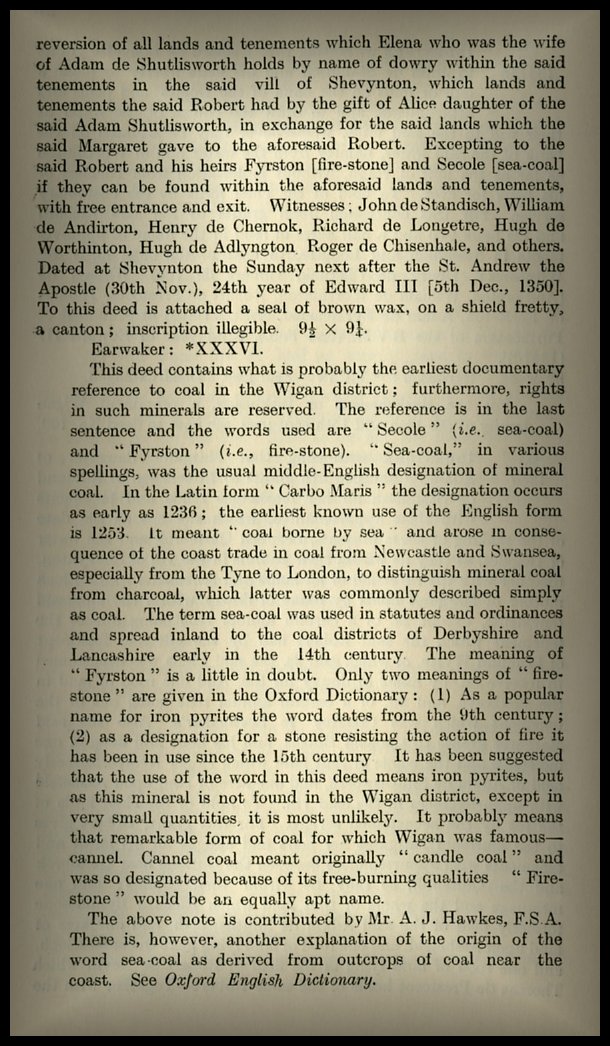
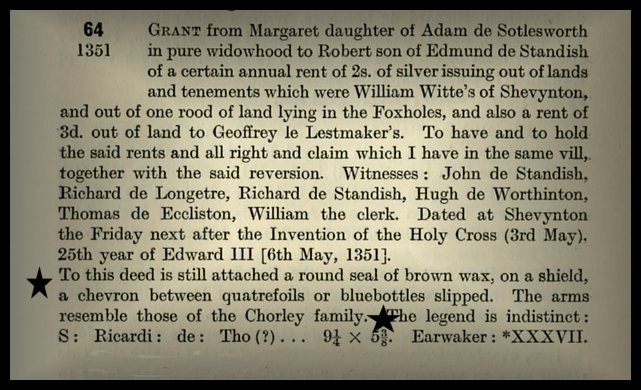
1351. The White family of Shevington and the Chorley Family of Chorley Hall, Chorley.
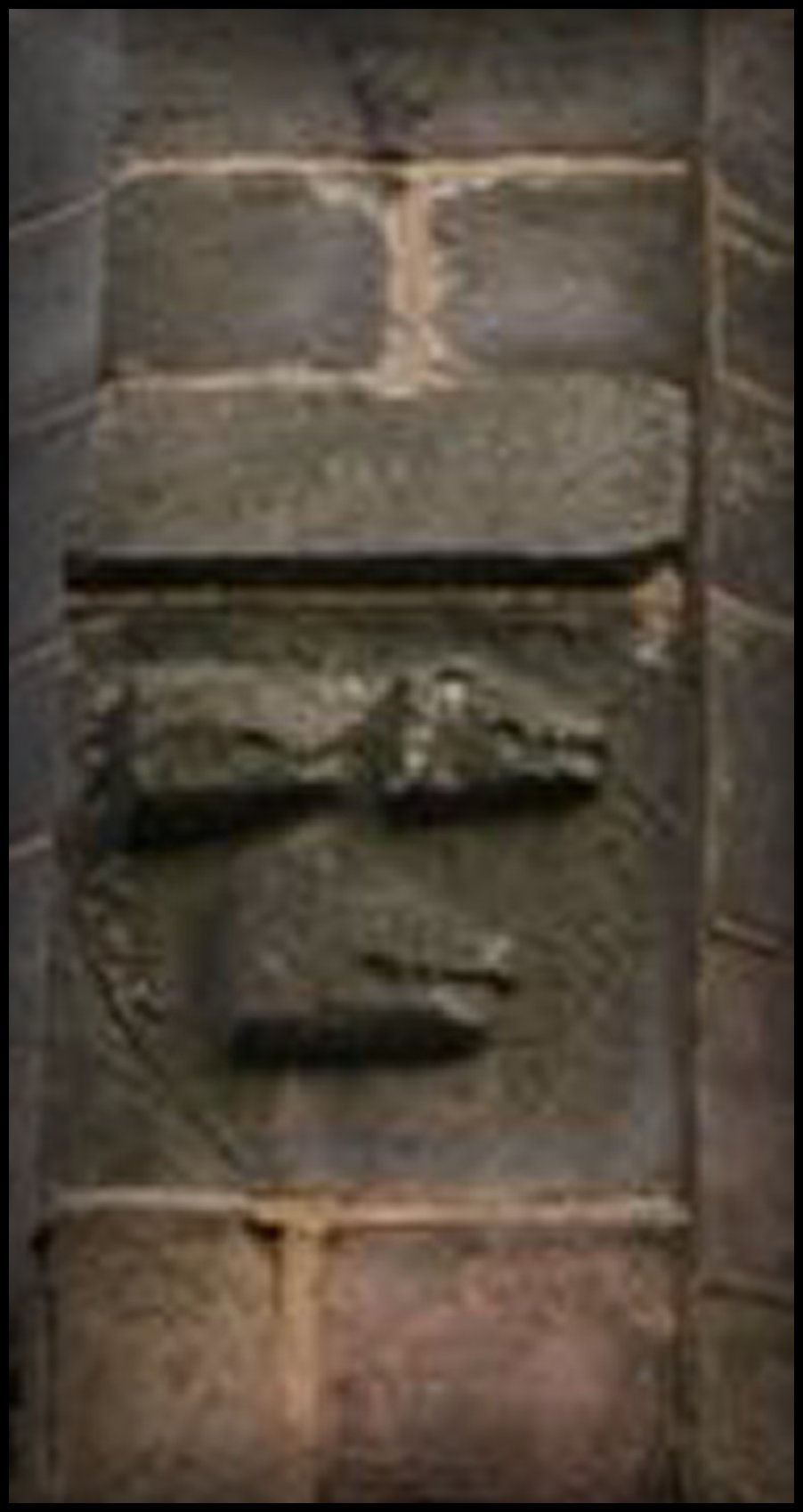
White family Coat of Arms
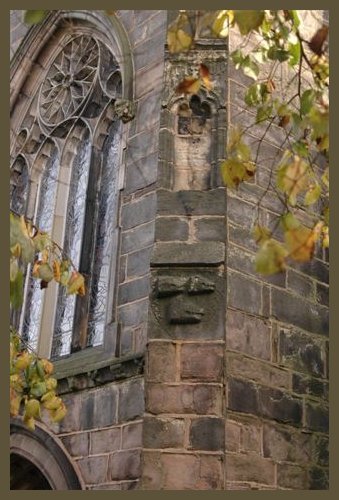
The Church Tower of St. Laurence Chorley Lancashire England.
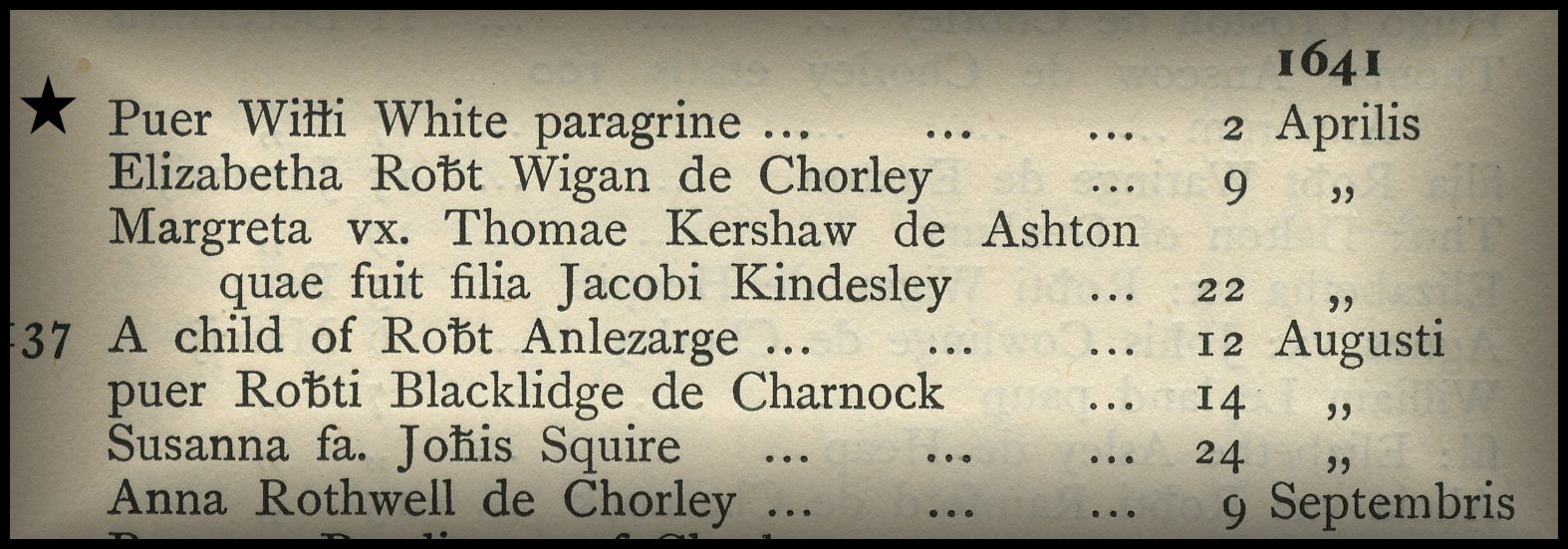
Paragrine White buried beneath the White family Arms on the Church Tower of St. Laurence.

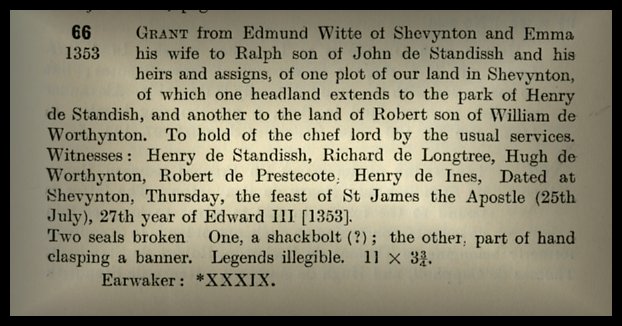
1328. Fairclough and White family of Shevington.
John del Fairclough, Almarica his
wife, Robert his son and Margery daughter of Henry Witte in 1328 agreed with
Henry as to the eighth part of the manor, which was in default to remain to
the right heirs of Almarica; Final Conc. (Rec. Soc. Lancs. and Ches.),
ii, 72. Sir Robert de Nevill of Hornby released land to Robert son of John de
Fairclough; Kuerden fol. MS. 366, R 21. Edmund Witte of Shevington and Emma
his wife made a grant of land in 1353; Standish D. (Local Glean.), no.
39.
At Easter 1356 Margery widow of Robert de Fairclough and daughter of Henry
Witte claimed an eighth part of the manor (except 100 acres of land), but the
jury held that Robert had alienated the estate to Hugh de Pemberton, rector
of Brindle; Duchy of Lanc. Assize R. 5, m. 29.
In 1362 Henry de Fairclough exchanged land in Foxholes for Robert de
Standish's land near Gathurst hey; Standish D. (Local Glean.), no. 54.
Ralph de Fairclough in 1420 sold to Sir William de Harrington a rent of 6d.
in Shevington, together with the homage and service of Thomas de Trafford and
Margery his wife; Final Conc. iii, 78.
Ralph Fairclough, Margaret his wife and Edward his son occur in 1448; Pal. of
Lanc. Plea R. II, m. 2b.
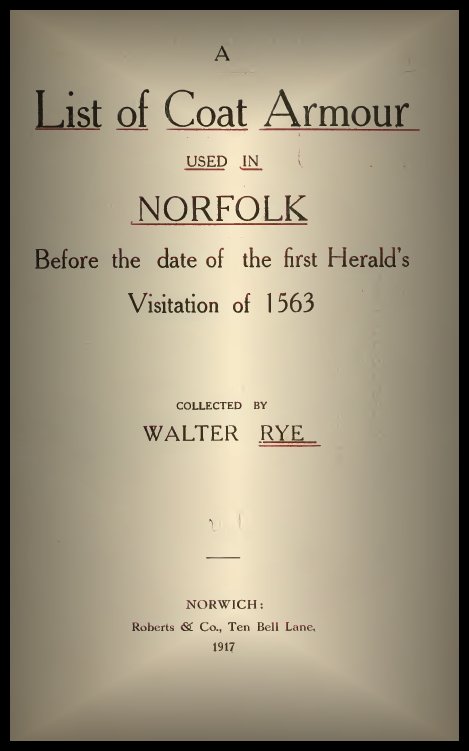
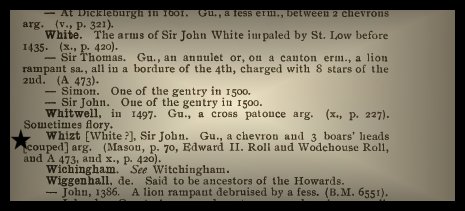
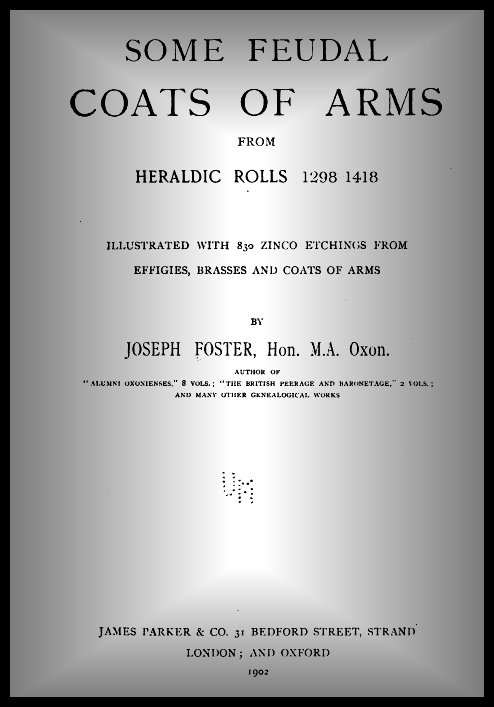
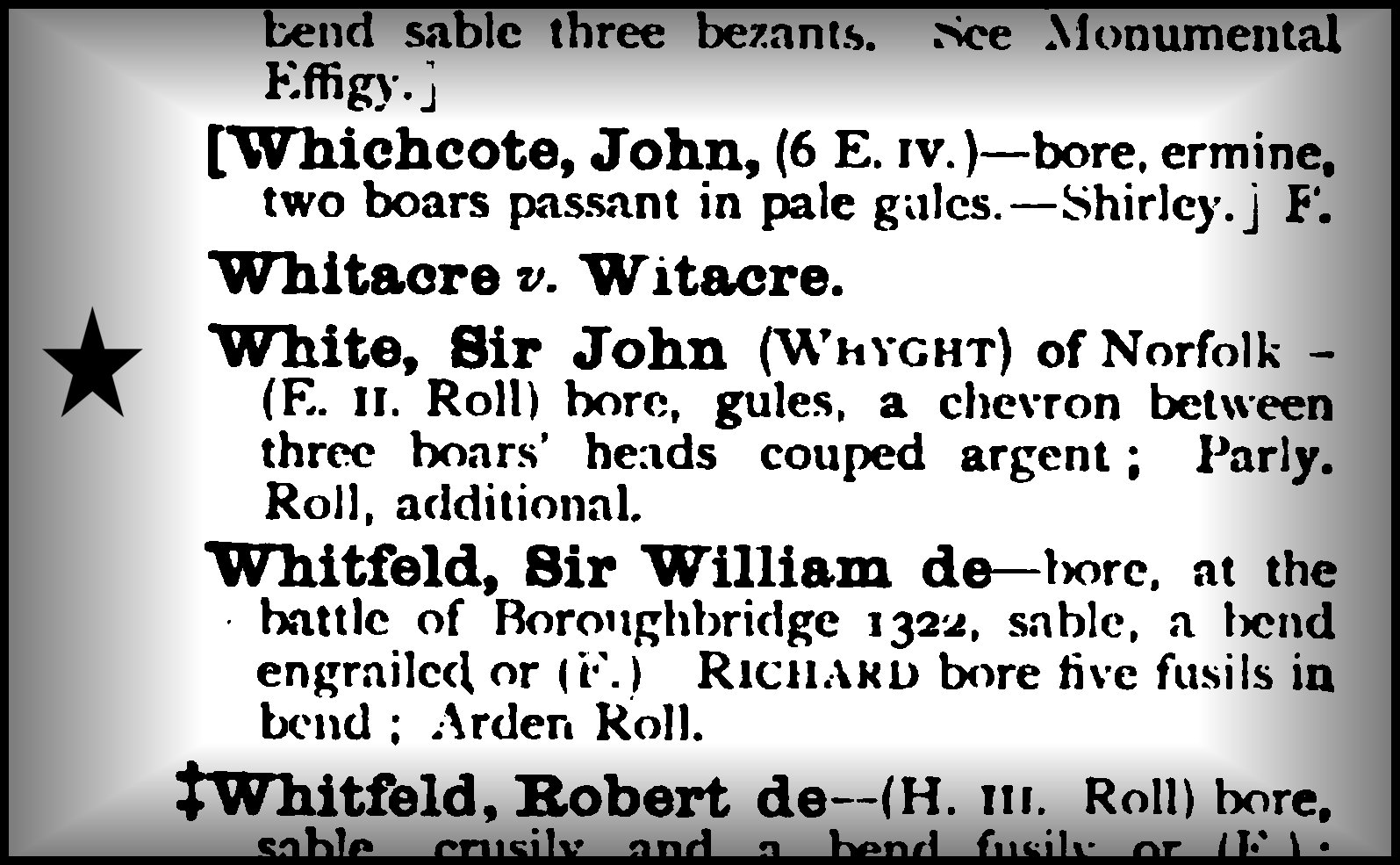

1395. White Family of Norfolk.
s. and h. of Bartholomew White of Lammas,
Norf. by his w. Maud. m. (1) Joan, da. and h. of Peter Hovel of
Swannington, Norf., wid. of John But of Norwich, 2s. 1da.; (2) between Nov.
1396 and Oct. 1397, Margery (d.c.1410), ?da. and coh. of Edward
Doreward of Bures, Suff., wid. of Thomas Bergham
alias atte Oke of Orford and of Robert Hethe of
Little Saxham, Suff. Kntd. bef. Nov. 1385.
Bailiff of the duchy of Lancaster manor of
Gimingham, Norf. by 12 Feb. 1380; feodary of duchy estates, Norf. by 20 Nov.
1381-4 Mar. 1383.
J.p. Norf. 8 Apr. 1381-Dec 1382.
Commr. of arrest, Norf. Dec. 1382; inquiry
June 1384 (theft of sheep); oyer and terminer Nov. 1385, Suff. July 1402;
array, Norf. Mar. 1392, Dec. 1399, Norwich Jan. 1404; gaol delivery, East Dereham,
Norf. July 1394, Sept. 1395; to collect an aid, Norf. Dec. 1401; of sewers Mar.
1403.
The Whites, held only small parcels of land in Norfolk before John’s career began. In September 1379 his mother transferred into his possession family properties situated a few miles to the north-east of Norwich, at Lammas, Scottow and Hautbois, in return for a pension of £2 a year, and John may also have inherited land at Shotesham, but that was all. It was the shire knight himself who increased the family’s prosperity by extending these holdings, first by his purchase in 1388 of another messuage at Lammas and the manor of ‘Maydenton’ in Frettenham, and then by his acquisition three years later of lands at Holme-next-the-Sea and Ringstead. His most important purchase was the manor of Shotesham which he bought from Margery Nerford in transactions completed in the spring of 1391. White subsequently had dealings with the abbot of St. Benet of Hulme with regard to fishing rights at Shotesham, and in 1394 he placed this manor in the hands of trustees (including his son-in-law Oliver Groos), who then ‘leased’ it back to him for a period of ten years. Meanwhile, his first marriage had given him an interest in lands at Swannington and elsewhere in Norfolk.
White’s growing prosperity was due to his employment by John of Gaunt - Duke of Lancaster.
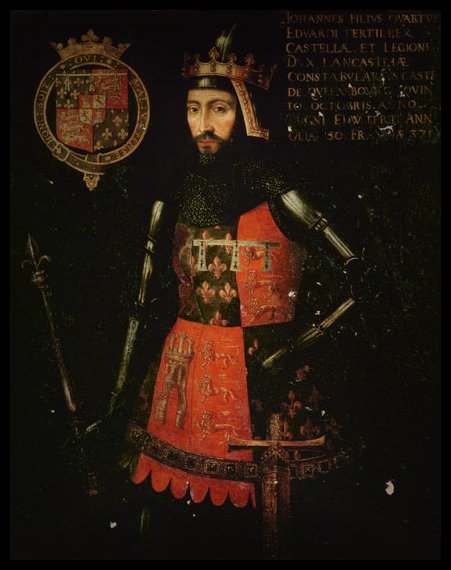
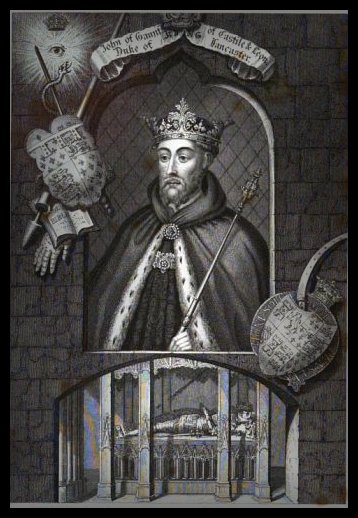
John of Gaunt - Duke of Lancaster.
A member of Lancaster’s retinue by the beginning of Richard II’s reign, he acted first as the duke’s bailiff of Gimingham and then as feodary of all his estates in Norfolk. It was probably in the duke’s company that he journeyed north to Scotland in the summer of 1385 in the army led by the King himself, and he may well have been knighted on that disastrous campaign. (Although the Norfolk returns to the Parliament summoned that October do not describe him as such, he was called ‘Sir’ John White when appointed to a royal commission only a month later.) White took out royal letters of protection on 12 Jan. 1386 to take part in Lancaster’s projected expedition to Castile, and while awaiting embarkation at Plymouth in the summer he gave evidence to the court of chivalry in the dispute over heraldic arms between Scrope and Grosvenor. Although he returned home before the duke he evidently retained a connexion with the house of Lancaster for several Years longer. For instance, in September 1388, while his third Parliament was in progress, he was associated with Sir Thomas Hungerford, the duke’s chief steward, as a mainpernor in Chancery. The reasons for White’s exclusion from royal commissions appointed by Richard II after 1395 and for his purchase of a pardon in May 1398 are not hard to discover, for the pardon made specific reference to treasonable offences he had committed as an adherent of the Lords Appellant in the period from 1386 to 1388. No doubt he had then been attached to the retinue of Henry of Bolingbroke, one of their number, and his Membership of the Merciless Parliament which condemned the King’s friends to death can hardly have recommended him for later employment by the Crown. Even so, he was still regarded as sufficiently important to be invited with other knights and notables of Norfolk to a breakfast given at Norwich ‘for the honour of the city’ later in 1398.2 White’s closest associates had similar ties with the dukes of Lancaster: for example, in 1397 he had been named as an overseer of the will of William Wynter of Barningham (one of the trustees of his own estates), whose son, John, was to emerge as a staunch supporter of Bolingbroke. Yet he did not restrict his own services to John of Gaunt, and the accession of Henry IV brought him nothing in the way of royal preferment. In 1391 he had paid homage to Margaret Marshal, countess of Norfolk, for property at Shotesham, and this had marked the beginning of an attachment which was to end only in March 1399 when she named him as an executor of her will. He also acted as a feoffee of the manor of Wickhampton (Norfolk) on behalf of his lady’s tenants, the Gerberges.
Early in 1397 Sir John had taken as his second wife Margery, the widow of Robert Hethe, whose family had similarly strong Lancastrian connections. Both of Margery’s previous husbands had represented Suffolk in Parliament, and it was in that county that her dower lands lay. They included the atte Oke manor in Orford, property at Sudbourne and Gedgrave and some of Hethe’s holdings near Bury St. Edmunds. In October 1397 White and his wife secured custody of the manor of Westley, which she had previously leased in association with Hethe. His subsequent tenure of the atte Oke estate was evidently not without attendant difficulties, for he had to bring suits for debts amounting to £50 against the heir, his wife’s stepson, John Oke.
White made his will at Norwich on 8 May 1407 and died before the 23rd, the date of probate. He requested burial in St. John’s chapel in the city church of St. Mary Combust, to which he left vestments and a chalice. His widow was to keep certain specified goods including jewellery and tapestries for life, though after her death they were to revert to his elder son, Robert. Sir John’s estates were divided between Robert (who inherited Shotesham and the bulk of the other holdings) and his younger son, John (who had ‘Maydenton’). His widow probably died early in 1410.
·
1. Bodl. Chs. Norf. 78, 108, 226-7, 464-7, 642-3;
JUST 1/1505 m. 14; F. Blomefield, Norf. v. 504-5; x. 331, 418-19;
CP25(1)168/180/205; W. Rye, Norf. Fams. 1002; CCR, 1399-1402,
p. 184.
·
2. Reg. Gaunt 1379-83, i. p. 12, nos.
199, 618; ii. no. 831; Somerville, Duchy, i. 378; Scrope v.
Grosvenor i. 59; C76/70 m. 28; CCR, 1385-9, p. 616; C67/30 m. 19;
Recs. Norwich ed. Hudson and Tingey, ii. 41.
·
3. Norf. RO, Reg. Harsyk, f. 240; CCR,
1399-1402, pp. 184, 263, 348.
·
4. CIPM, xv. 454, 955; CP25(1)223/111/5; CFR,
xi. 235; CCR, 1399-1402, p. 98; CPR, 1401-5, pp. 147, 337,
343.
·
5. Lambeth Pal. Lib. Reg. Arundel, i. f. 541; CPR,
1408-9, p. 163
The White family of the United States of America.

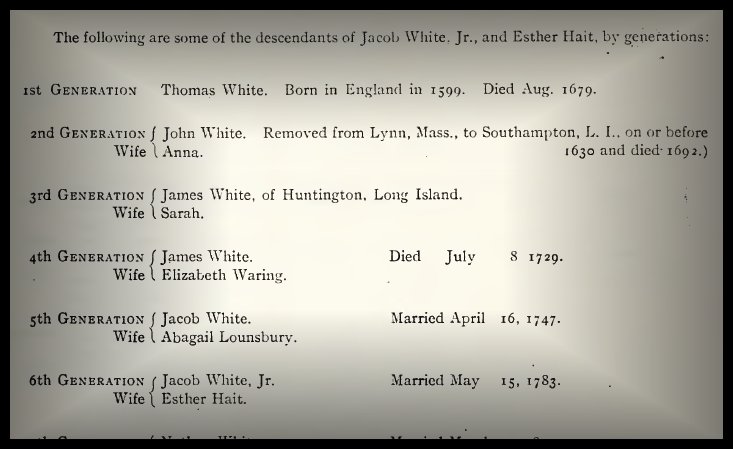
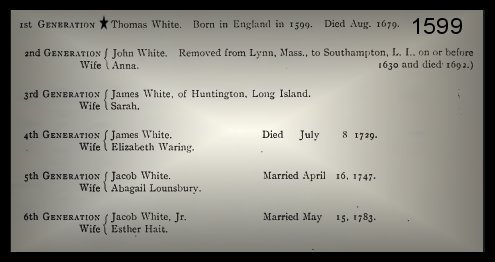
The Family history of the WHITE Family of the USA. - DOWNLOAD PDF File.
|
Birth name |
John White |
|
Born |
c.1540 |
|
Died |
c.1593 |
|
Nationality |
English |
|
Field |
Painting, Drawing, |
|
Training |
Unknown |
|
Works |
Paintings of
16th Century Native American society |
|
Patrons |
Sir Walter Raleigh |
John White (c. 1540 – c. 1593) was an English artist, and an early pioneer of English efforts to settle the New World. He was among those who sailed with Richard Grenville to North Carolina in 1585, acting as artist and mapmaker to the expedition. During his time at Roanoke Island he made a number of watercolor sketches of the surrounding landscape and the native Algonkin peoples. These works are significant as they are the most informative illustrations of a Native American society of the Eastern seaboard; the surviving original paintings are now stored in the print room of the British Museum.
Later, in 1587, White became governor of Sir Walter Raleigh's failed attempt at a permanent settlement on Roanoke island, known to history as the "Lost Colony". This unsuccessful effort represented the earliest attempt at a permanent English colony in the New World, and White's granddaughter Virginia Dare was the first English child born in the New World. After the failure of the Lost Colony, White retired to Raleigh's estates in Ireland, reflecting upon the "evils and unfortunate events" which had ruined his hopes in America, though never giving up hope that his daughter and granddaughter were still alive.
John White's exact date of birth is unknown but it seems likely he was born some time between 1540 and 1550. There is a record dated February 22, 1539 of a christening in the Church of St Augustine, London of a "John White" on that same day; but there is no proof this is the same person. White is known to have attended church in the parish of St. Martin Ludgate in London. In 1566 he married Tomasyn Cooper; with whom he had a son, Tom, who died young, and a daughter Eleanor. Little is known of White's training as an artist but it is possible that he apprenticed as an illustrator under a London master.
Native American society of the Eastern Seaboard painted by John White 1540 to 1593.
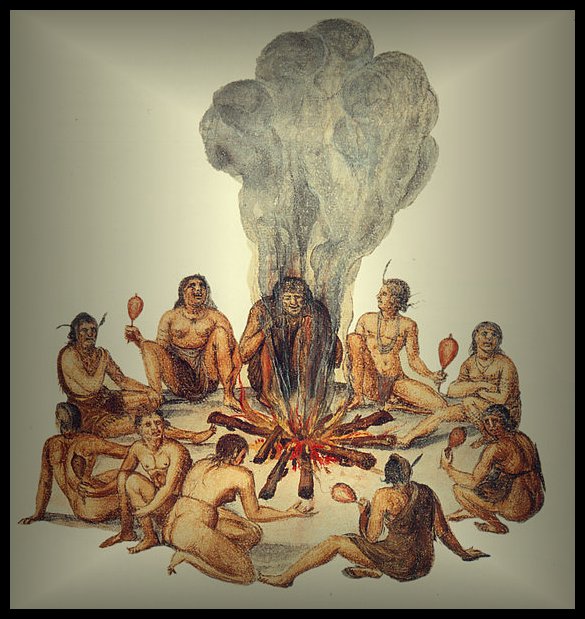
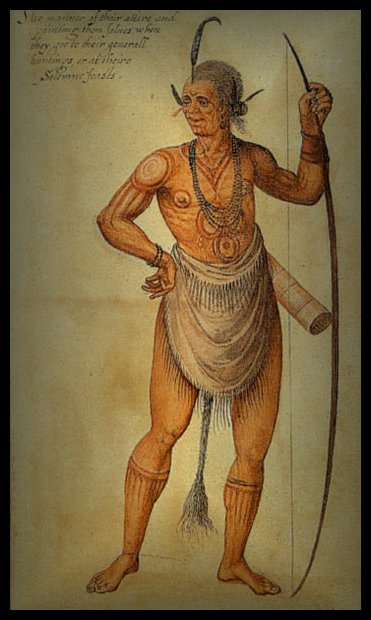
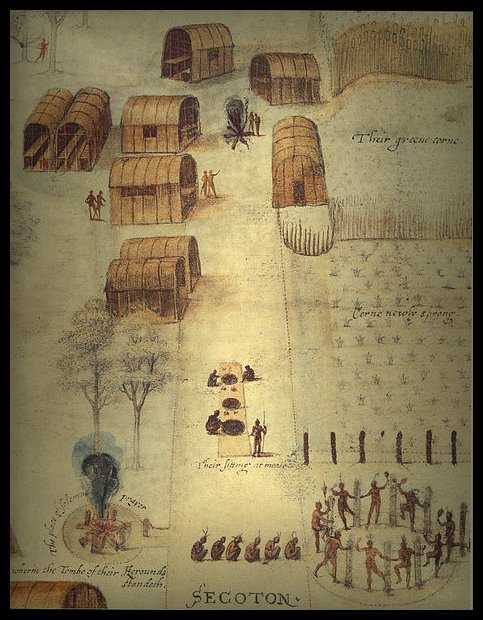
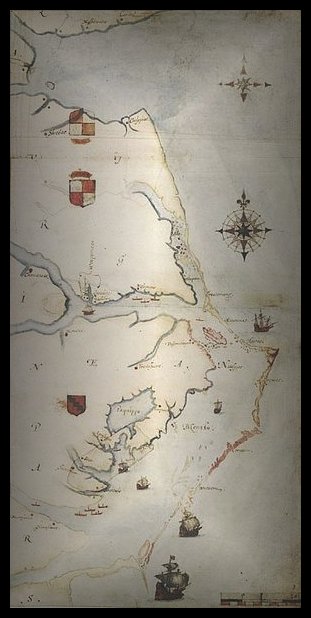
A Bridgett White was also the second wife of a Robert Wight (1578–1617) of Hareby, Lincolnshire, England whom he married on November 25, 1613 at Alford. As this Robert was also the son of an obscure John Wight (b. abt. 1552) and the father of an Elizabeth Wighte (1606–1671) who is sometimes thought to have been the ex-wife of Nathaniel Eaton (1610–1674), the first schoolmaster of Harvard College, Massachusetts; there is a possibility that Bridget White, the sister of John White the Governor of Roanoke Colony, and Bridgett White, the second wife of the same above-mentioned Robert Wight, are directly related to each other.
There is also a record of an Elizabeth Aguirre of Petersfield, Hampshire (died 1665), who was the second wife of Josias White (1573–1622) of Hornchurch, Essex, brother of John White the 'Patriarch of Dorchester' and son of a John White of Stanton St John, Oxfordshire (1540 – before September 30, 1618), who afterwards married a Francis Drake (1573–1634) of Walton-on-Thames, Surrey – a first cousin once removed of Sir Francis Drake (1540–1596) the famous explorer. This Josias White was the grandson of another John White (died 1580) possibly connected to Dr Thomas White (1514–1588), Warden of New College, Oxford. As the name Barlow is associated with the initial discovery and mapping of the Virginia coast by Capt Arthur Barlowe (1550–1620) in 1584, it is conceivable that Ann Barlow is directly connected to the first Governor of Roanoke, Virginia.
![]()
People and events in Shevington 1201 to 1818 (a small selection of many).
Year 1201 - Robert de Hulton
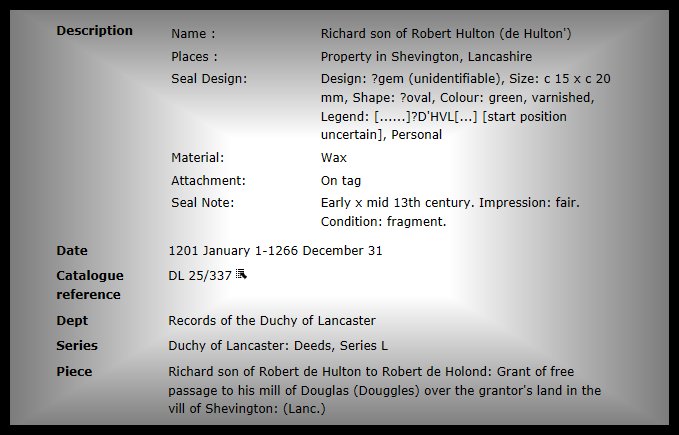
Year c.1300 - Henry Sprateling.

Year 1310 - Adam de Banastre.
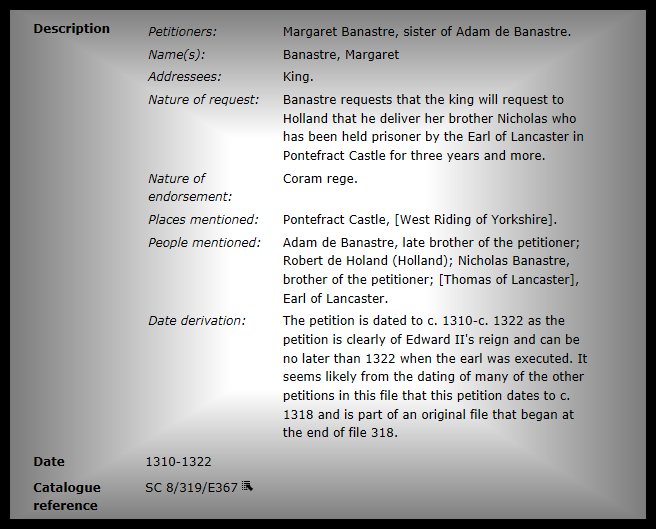
Year 1540 - Mathew Standish of Parke Broke.

Year 1593 - Sale - Manor of Shevington

Year 1617 - the Shevington Tailor.


Year 1622 - Peter Finch.

Year 1645 - Marriage - Margaret Worthington and John Orrell.

Year 1659 - Will Eward Bimston.
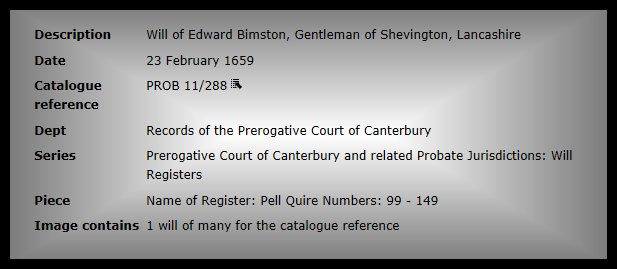
Year 1661 - A list of the poor people of Shevington.

Year 1661 - John Rigby of Gathurst.

Year 1673 William Heaton Soldier .

Year 1677 Lawrence Finch.

Year 1679 COAL from John's Field Shevington.

Year 1693 to 1701 Parish Relief


Year 1710 Jeryah Finch of Shevington

Year 1712 Coal in Shevington.

Year 1712 William Rigby - Linen weaver.

Year 1750 SURVEY and Valuation in Shevington.

Year 1756 Will of John Pearson.
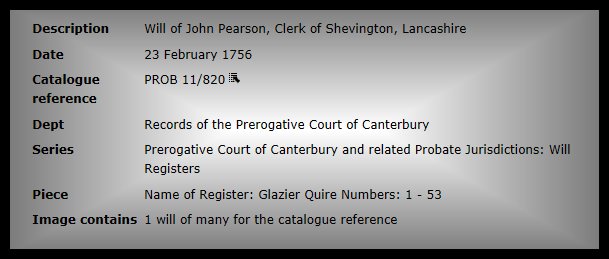
Year 1784 Sale of Shevington Hall.

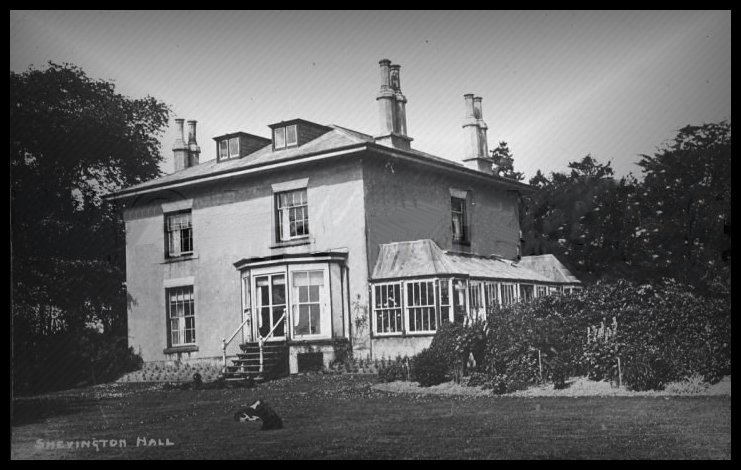
Year 1832 William Fairclough of Stone Hall.

Years 1758 - 1766 - 1794 . "the Order of the Boot" kicked out of Shevington.



Years 1802- 1808 - returned to Shevington


Years 1792 - 1807 - 1818 - Bastardy.



![]()
The Hesketh family.
The Hesketh family were also involved in the Myles Standish saga.
The Hesketh family purchased all the lands owned in 1529 by Margaret Standish of Ormskirk. The lands were in Ormskirk - Burscough - Croston - Mawdesley - Wrightington - Newburgh . In his will of 1656 Myles Standish claimed lands in the same locations. The Standish family of Ormskirk were descended from the illegitimate children of Mary de Ince.
The lands owned in 1529 by Margaret Standish of Ormskirk transferred to the Hesketh Family - Original Documents (2).
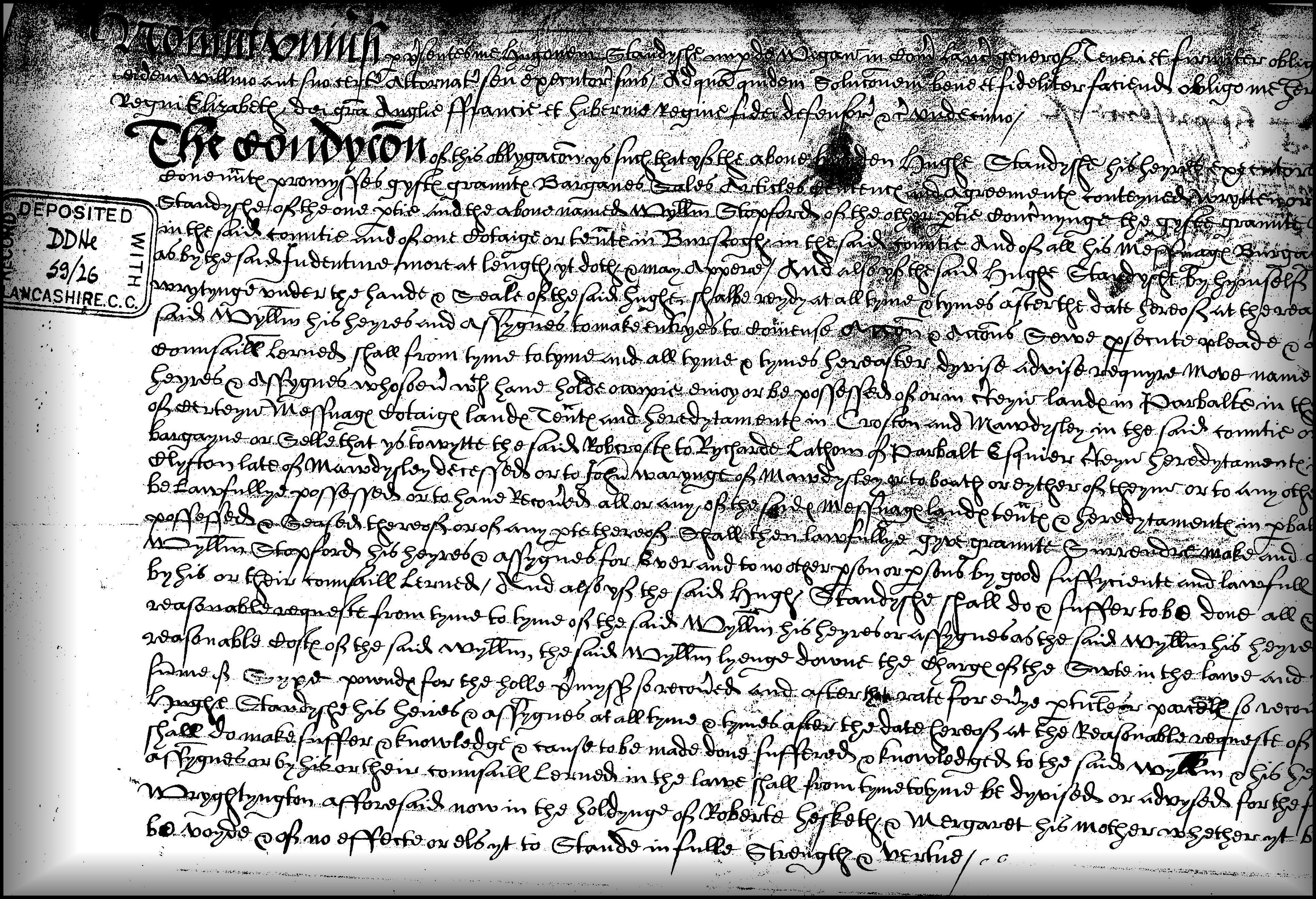
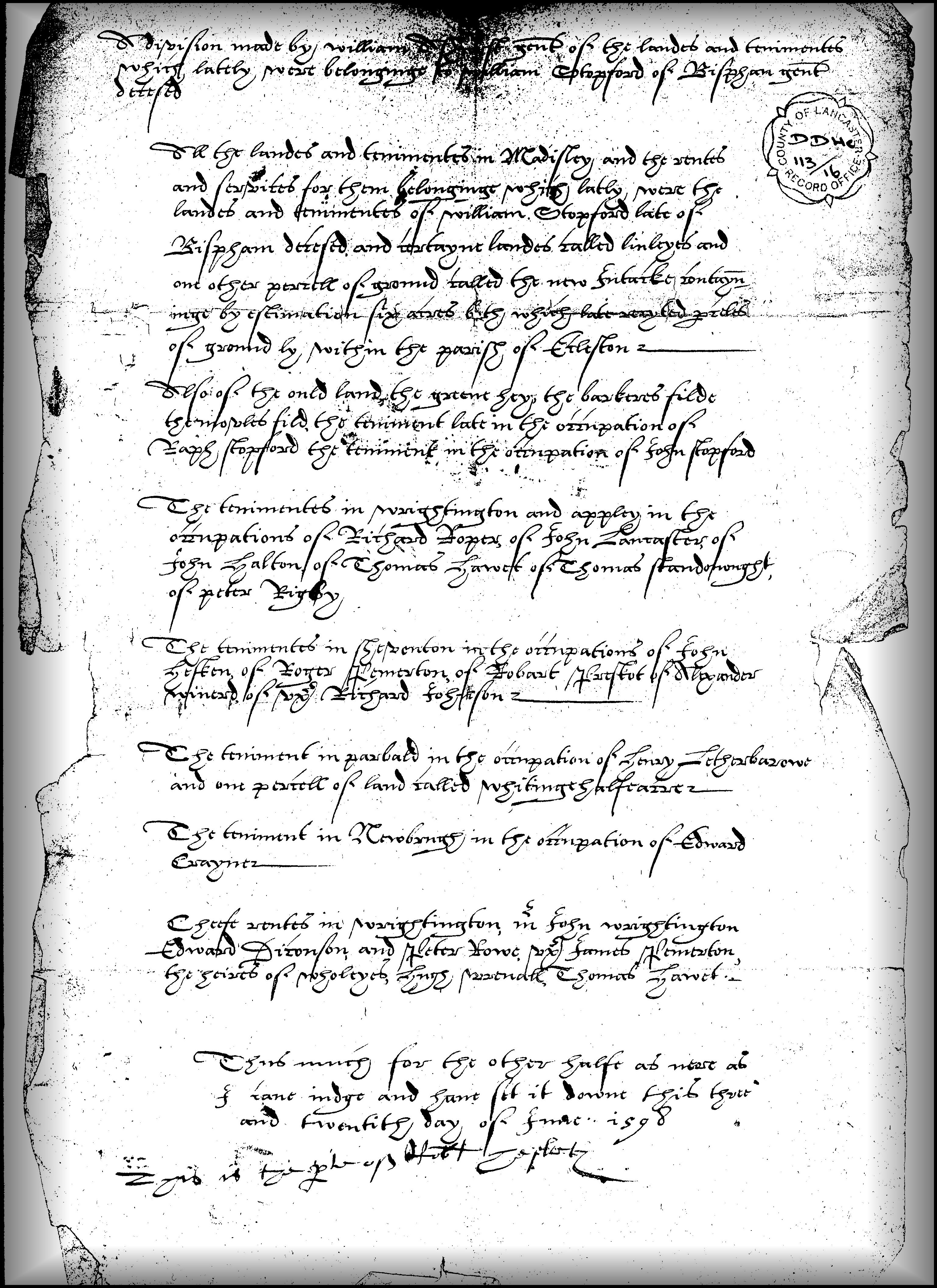
Ormskirk Burscough
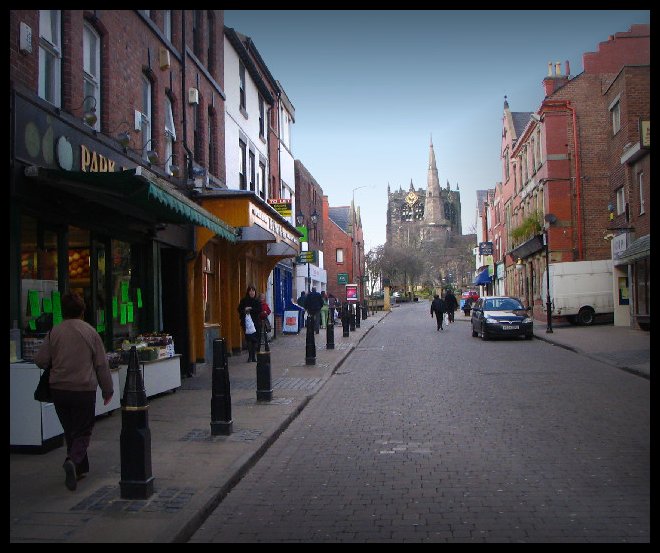
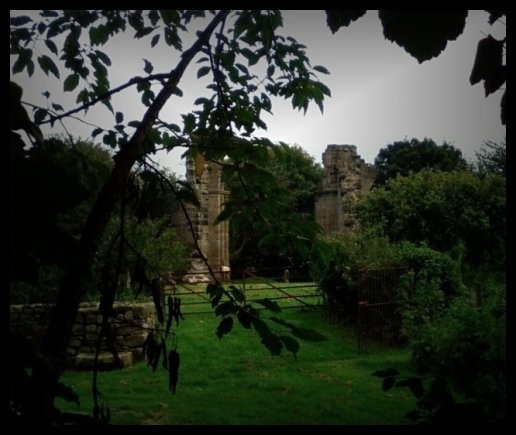
Croston Mawdesley
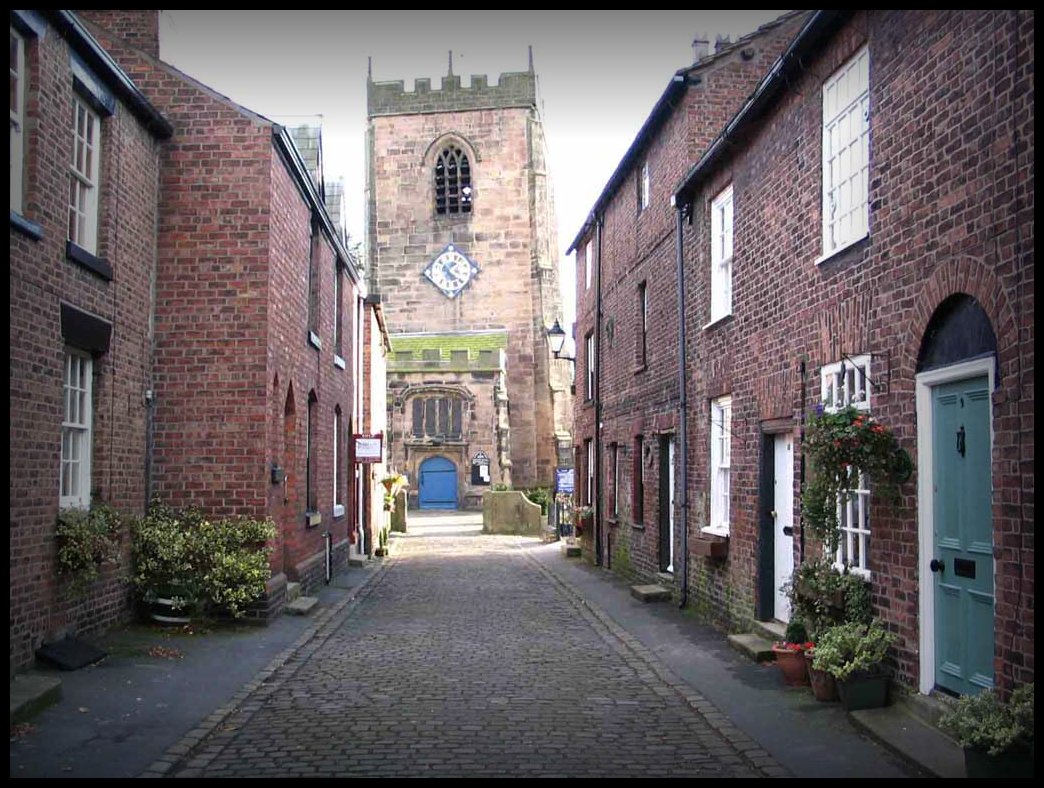
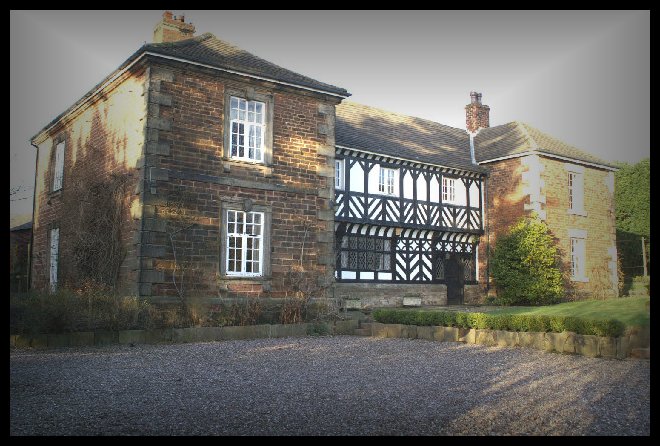
Wrightington Newburgh
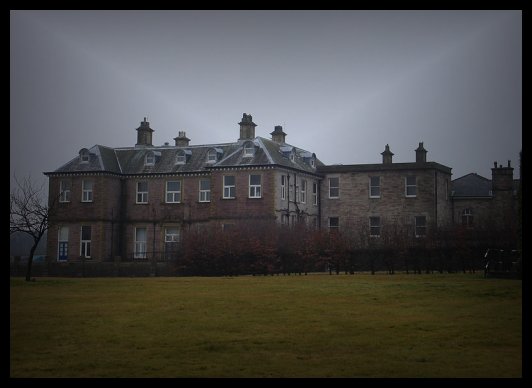
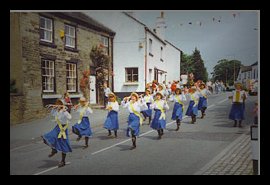
![]()
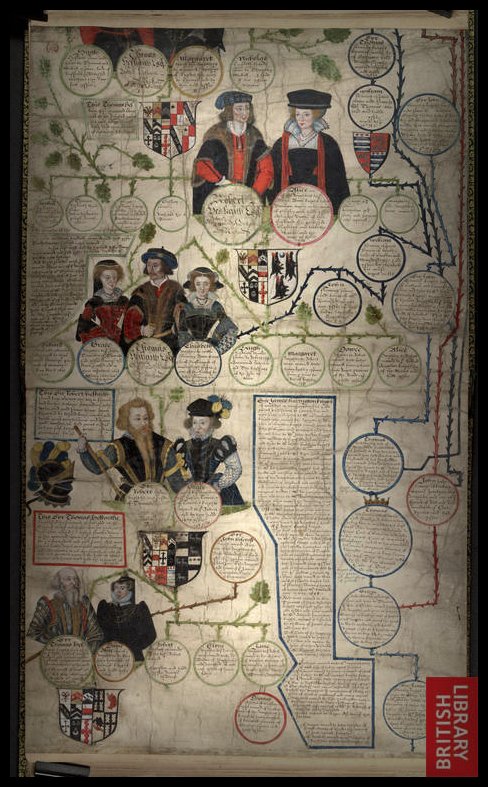

Hesketh, Richard
(c.1475–1520), was the second son of
Robert Hesketh of Rufford, Lancashire, a family long settled in those parts.
His younger brother Hugh Hesketh became bishop of Sodor and Man in 1513.
Richard was admitted to Gray's Inn in the late fifteenth century and is
mentioned as an attorney in a common pleas case of 1500. A private dictum
attributed to ‘Hasket’ occurs in the year books for the same year but is
probably attributable to 1502. Hesketh gave his first reading about 1508 on the
carta de foresta, and a written version of this exposition of the forest
law made the name of Hesketh familiar to all lawyers in the sixteenth and early
seventeenth centuries. Although never printed, the reading had a wide
circulation and still survives in at least twelve manuscript texts, some of
them translated from French into English. The texts are anonymous, but the
author is identifiable from an internal allusion when he puts a case concerning
an indictment of someone called Hesketh, omitting the name Richard. John
Manwood cited ‘M. Hesket’ several times in his Forest Law
(1598), though on folio 21 he wrongly confused him with Bartholomew Hesketh,
who was clerk of the peace at Lancaster.
By the time of his first reading, Richard Hesketh was king's attorney and
serjeant in the county palatine of Lancaster, and deputy chief steward in the
north parts for the duchy of Lancaster. In 1515 he gave his second reading in
Gray's Inn, on the Statute of Merton, and the
following year was appointed a baron of the exchequer at Lancaster. His wife
was named Elizabeth; no other details are known of her. He died in 1520, when
he was probably still in his forties. By his will, dated 11 August and proved
on 13 November 1520, he desired to be buried in the family chapel at Rufford,
where he had founded a free school.
J. H. Baker
R. Somerville, History of the duchy of Lancaster, 1265–1603
(1953), 426, 483, 485 · J. H. Baker, Readers and readings in the inns of
court and chancery, SeldS,
suppl. ser., 13 (2000) · will, TNA: PRO, PROB 11/20, sig. 3 · Les reports
des cases (1679), Michaelmas 15, Henry VII, fol. 14, plea 3 [year books] ·
Gray's Inn, MS 25, fol. 61 · J. Manwood, Forest law (1598) · LP Henry VIII, 1,
no. 438(4/m.19) · The reports of Sir John Spelman, ed. J. H. Baker, 1, SeldS, 93 (1977), 171,
213 · TNA: PRO, CP 40/951
![]()
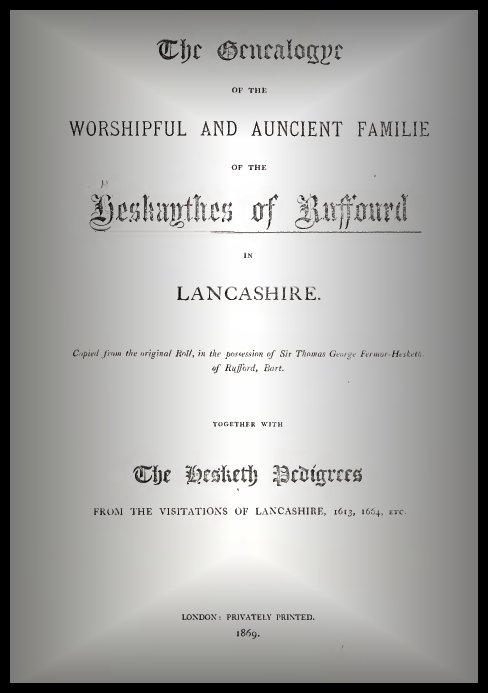
The Family history of the Hesketh Family. - DOWNLOAD PDF File.
![]()
The Catterall family of Crook, Shevington Manor.
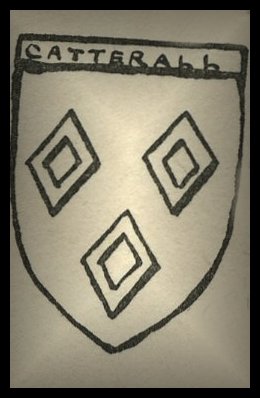
Catterall of Crook. Azure three mascles argent.
The name Catterall of Catterall recorded in the Great Domesday Book in the year 1086.
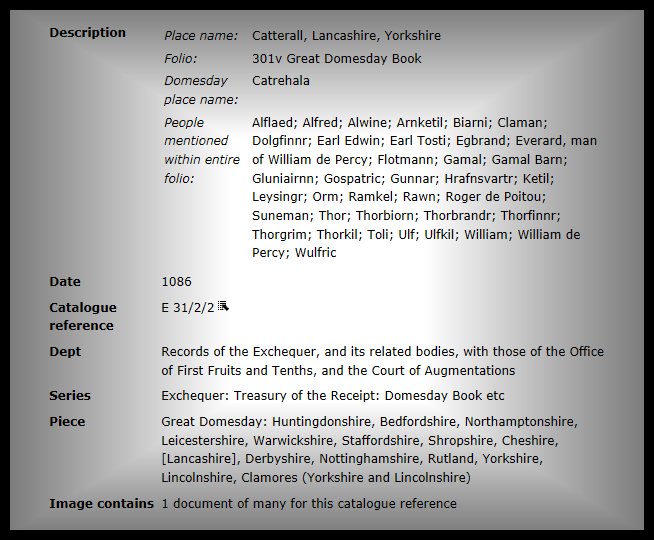
CROOK HALL Shevington Lancashire England the home of the Catterall family.
CROOK HALL,
the former seat of the Catterall family, stands on low ground on the north bank
of the River Douglas about 2 miles below Wigan, and at the extreme
south-eastern end of the township. The house is a good
specimen of the two-story half-timber building of the early 17th century with
central hall and projecting gabled end wings. The principal front faces north,
and is about 68 ft. in length, the lower part of the wall to the height of the
first floor being built with 2 in. bricks on a low stone base, above which it
is of timber with uprights and diagonal bracings. The roofs are covered with
stone slates.
The end gables have lost their barge-boards and have
been renewed in deal, but the greater part of the timber work is original
though much dilapidated. In the recess formed by the projection of the west
wing is a porch, 9 ft. wide, carried up the full height of the building with
gable over, and there is another smaller dormer gable in the roof, forming
together a picturesque and somewhat irregular composition. A plaster cove marks
the line of the floor, and another under the eaves is carried across the end
gables.
Below the sill of the window over the porch is an inscription between two carved brackets, ANNO DNI 1608: PEC RR + IR § CARP.
The south elevation facing the river is built of
brick and has two plain gables. Most of the windows are modern insertions as in
the timber portion of the front, but the hall preserves its original
seven-light stone mullioned and transomed window with label over on this side,
as well as a five-light window of similar design on the north. The hall,
which has a flagged floor, is 22 ft. 6 in. long by 19 ft. 6 in. wide, and the
ceiling, which is crossed by three moulded beams, is 10 ft. 9 in. high. There
is now a fireplace at each end with modern grates, but the door at the
north-west corner is the old nail-studded oak one with good iron hinges and
knocker. The rest of the house has been modernized and is without interest.
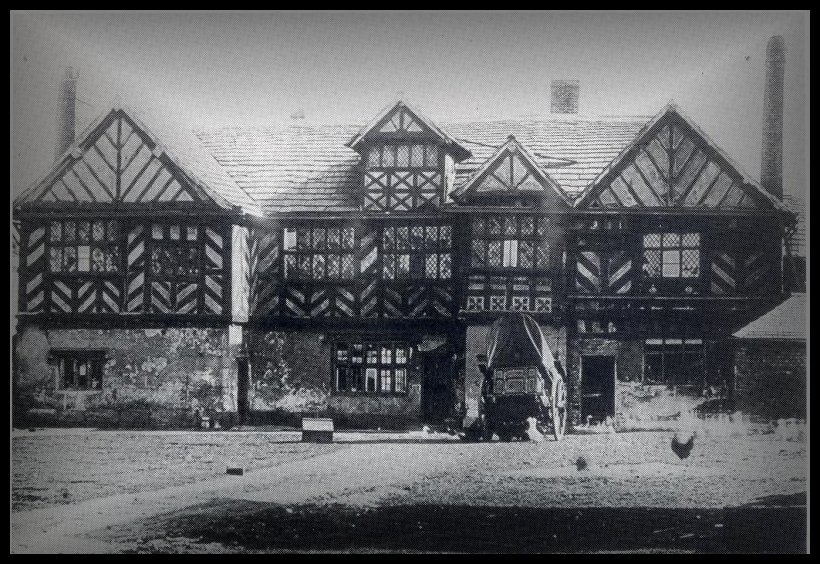
Crook Hall, Shevington the home of the Catterall family.
![]()
Shevington in the year 2011.
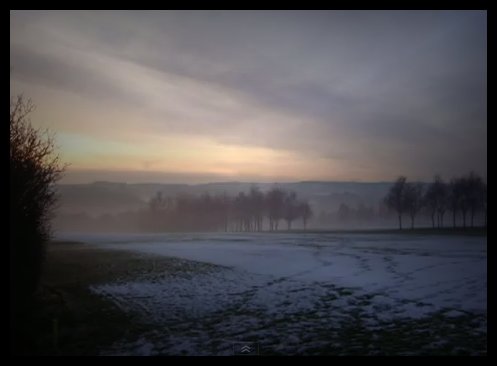
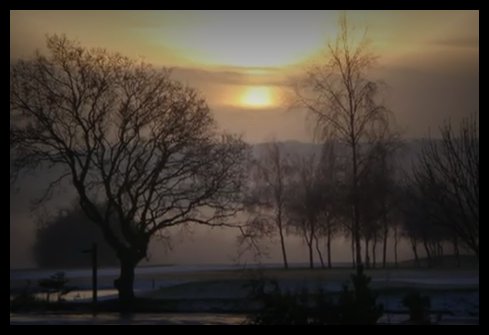
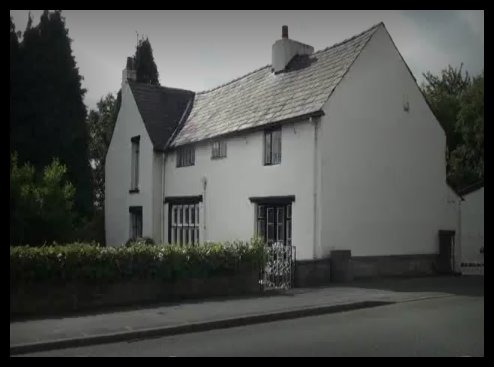
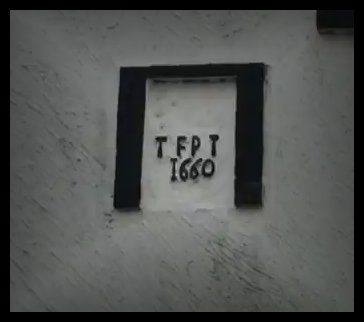
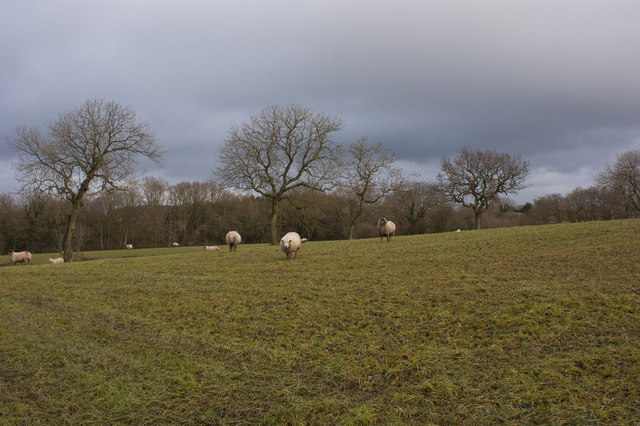
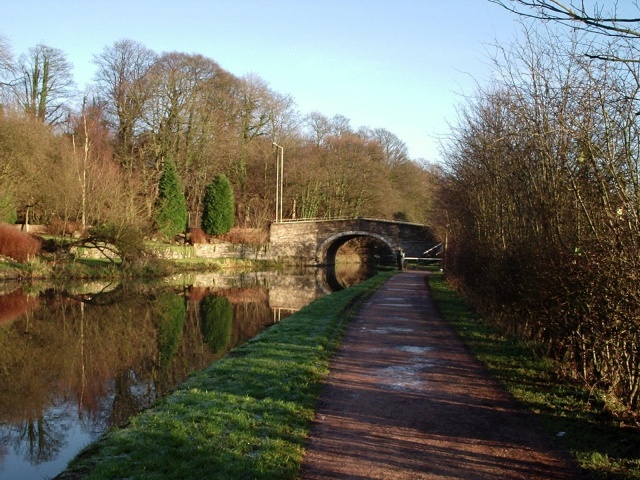
![]()
|
1 |
1,727, including 29 of inland
water;Census Rep. 1901. |
|
2 |
Including Gathurst. |
|
3 |
Subs. R. Lancs. bdle. 250, no. 9.
The houses next in size were those of Robert Almond, seven; Mr. Holt, six;
and John Finch, five. |
|
4 |
Lancs. Inq. and Extents (Rec. Soc. Lancs. and Ches.), i, 29. |
|
5 |
Lancs. Inq. p.m. (Rec. Soc. Lancs. and Ches.), i, 261. |
|
6 |
Lancs. Inq. and Extents, i, 150. |
|
7 |
Shevington seems to have been
regarded as the Harringtons' part of the lordship, their name being usually
connected with it; but as late as 1559 Sir Richard Hoghton was stated to hold
a third of the fourth part of a knight's fee in Shevington, Charnock Richard
and Welch Whittle of the queen as of her duchy of Lancaster; Duchy of Lanc.
Inq. p.m. xi, no. 2. In the later Hoghton inquisitions the tenure is not
stated. |
|
8 |
In 1508 there was a dispute
between Richard Beaumont and Elizabeth his wife on one side and Sir Edward
Stanley, lately husband of Anne, on the other—Elizabeth and Anne being
daughters and heirs of Sir Thomas Harrington—as to the inheritance, which
included lands in Shevington, Aintree and Melling in South Lancashire; Pal.
of Lanc. Plea R. 106, m. 4 d. There was probably a division, as Melling and
Aintree went to Elizabeth's heirs, while Shevington became the Mounteagles'. |
|
9 |
Ibid. bdle. 36, m. 87. Lord
Mounteagle's free tenants about the same time were Edward Standish, Roger
Bimson, Nicholas Walter, Robert Rigby, Nicholas Gillibrand, John Bold, James
Bradshaw and Alexander Woodward; Kuerden, loc. sup. cit. |
|
10 |
Jordan de Hulton in 1253 claimed 8
oxgangs in Shevington and 30 acres in Wrightington against Robert son of
Robert de Hulton; Curia Regis R. 149, m. 19 d. |
|
11 |
Richard (or Roger) de Hulton of
Shevington in 1325 granted to Thomas his son and heir certain lands in
Shevington; Standish D. (Mrs. Tempest's abstracts), no. 35. In the same year
he gave his son Henry land called the Crook in Shevington at a quit-rent of 1d.;
Add. MS. 32104, no. 507. Henry de Hulton in 1349 gave to Maud de Ince and
Hugh son of Richard de Ince a rent of 10 marks charged on his lands in the
Crook by Ryley clough and Douglas; ibid. no 1165. From another deed (no.
1167) it appears that Henry married Maud. Agnes the daughter of Henry in 1365
released to trustees her right in the Crook, while in 1386 Henry de Hulton
demised land and a grange to Hugh de Ince for a term of six years; ibid. no.
506, 1166. |
|
12 |
Standish D. (Local Glean.),
ii, no. 1–3, which should be dated Hen. VI; see also Pal. of Lanc. Plea R. 5,
m. 14b. Robert de Hulton had granted to his son Richard certain lands
in Shevington which were claimed by Thurstan de Standish by descent as
follows: Richard–s. Roger –s. Henry –s. Robert –dr. Margery –s. and h.
Thurstan de Standish. Roger de Catterall, Katherine his wife, Hugh del Hey
and Isabel his wife were in possession of a portion of the tenement; Roger
called Richard Catterall to warrant him. |
|
13 |
In 1562 Roger son and heir of
Thomas Standish of Shevington agreed to convey to Edward Standish of Standish
all the estates of his parents Thomas and Elizabeth; Standish D. (Local
Glean.), no. 315. Roger is called 'of Parkbrook ' in Kuerden fol. MS.
366, R 22. |
|
14 |
Lancs. Inq. p.m. (Chet. Soc.), i, 64. The estate is not described in the
same way in the later inquisitions. Thus Alexander Standish, who died in
1445, is said to have held three messuages, 44 acres of land, &c., in
Shevington of Margaret widow of Sir William Harrington by services unknown;
Towneley MS. DD, no. 1479. Similarly in the case of Ralph Standish, 1538 and
later. |
|
15 |
John del Fairclough, Almarica his
wife, Robert his son and Margery daughter of Henry Witte in 1328 agreed with
Henry as to the eighth part of the manor, which was in default to remain to
the right heirs of Almarica; Final Conc. (Rec. Soc. Lancs. and Ches.),
ii, 72. Sir Robert de Nevill of Hornby released land to Robert son of John de
Fairclough; Kuerden fol. MS. 366, R 21. Edmund Witte of Shevington and Emma
his wife made a grant of land in 1353; Standish D. (Local Glean.), no.
39. |
|
16 |
Final Conc. iii, 160; Thomas, Richard and Bartholomew Hesketh were
plaintiffs and Ralph Fairclough and Grace his wife deforciants of messuages
and lands in Shevington, Wrightington and Welch Whittle. Ralph had a son
Lawrence; Pal. of Lanc. Plea R. 101. A later plea shows a pedigree thus:
Henry Fairclough -s. Ralph -s. Lawrence -s. Ralph; ibid. 104, m. 3 d. |
|
17 |
The Nevill estate may have
descended from Hulton or Atherton as in other cases. Hugh de Atherton had
land and wood in Shevington in 1305; De Banco R. 154, m. 46 d. An eighth part
of the manor was in 1347 settled by Sir Robert de Nevill of Hornby, Joan his
wife, John his son and Isabel wife of John; Final Conc. ii, 125. This
no doubt descended to the Harringtons and Mounteagles and became merged in
that already recorded. |
|
18 |
Walter de Carr, Alice his wife,
Adam de Fairhurst, Margery his wife and others in 1283 claimed land in
Shevington against Adam son of Thomas de Shevington and William son of Simon
of the same; De Banco R. 48, m. 8. |
|
19 |
Hugh son of Richard de Shevington
in 1348 gave to Geoffrey de Wrightington for twelve years a rent of 12s.
out of messuages, &c., in Shevington, also a rent of 40s. for the
life of Hugh son of William the Carpenter, and the reversion of all the
grantor's lands in the township with demesnes, homages, &c., held by the
said Hugh son of William; Kuerden MSS. ii, fol. 267b. At the same time
Richard de Perpoint and Agnes his wife gave land in Stonyhurst in Shevington
to Richard son of Richard de Shevington; ibid. The father Richard may have
been the Richard Sayselson of a preceding note. |
|
20 |
In 1292 Cecily widow of Alexander
le Fitz Gene de Holland claimed dower in a messuage against Alice widow of
Robert de Hulton; Assize R. 408, m. 41. |
|
21 |
Richard and Agnes de Pierpoint
have been named above in a plea of 1292, and Richard was a defendant in 1305;
De Banco R. 154, m. 46 d. A note of one of his charters is in Kuerden fol.
MS. 366, R 1. A number of the Pierpoint charters are in Kuerden MSS. iv, R 2b.
Richard in 1308–9 gave his son Robert land in Shevington; Robert, who was a
clerk, had several sons by Cecily de Eccleston—John, Robert, Richard, Thomas
and Roger—on whom lands in Shevington were settled in 1322–3. Joan daughter
of John le Perpoint of Shevington in 1371 gave lands in the township to
Robert son of Edmund de Standish; Standish D. (Local Glean.), no. 56.
Nicholas Perpoint and Alice his wife occur in 1448; Pal. of Lanc. Plea R. 11,
m. 2b. |
|
22 |
Emma daughter of Robert de
Shuttleworth released to her brother Richard her right in Shevington;
Standish D. (Local Glean.), no. 5. Richard de Shuttleworth was a
defendant in 1305; De Banco R. 154, m. 46 d. Adam son of Richard de
Shuttleworth in 1321 gave Woodhey to William Witte; Standish D. (Mrs.
Tempest's abstract), no. 33. Adam de Shuttleworth in 1342 made a grant to
Margery daughter of Agnes, &c.; ibid. no. 58. In 1347 Adam de
Shuttleworth appears to have made a disposition of his estate. His son Robert,
who had married Ellen, and younger sons John, Richard and Roger are named;
Kuerden fol. MS. 366, R 26, 27. Margaret daughter of Adam de Shuttleworth in
1350 granted her lands to Robert son of Edmund de Standish; Standish D. (Local
Glean.), no. 36, 37. |
|
23 |
The surname, as will be seen from
other notes, occurs from time to time. In 1540 Alexander Catterall made a
settlement of an estate of eight messuages, 120 acres of land, &c., in
Shevington, Wigan, Ince and Aspull, with remainders to Peter Catterall of
Buckesbury and to Lawrence Catterall of Shevington; Pal. of Lanc. Feet of F.
bdle. 12, m. 43. |
|
24 |
Robert de Worthington, Emma his
wife and Hugh de Ince were concerned in a deed relating to the Ridges in
Shevington in 1377; Standish D. (Mrs. Tempest's abstract), no. 94. |
|
25 |
Shevington occurs in the list of
estates in 1292; Plac. de Quo Warr. (Rec. Com.), 375. About 1540 the
tenants were: Ralph Standish for Claybutts, paying 3d.; Sir Robert
Hesketh and Thomas Standish for the messuages of Rigby and Catterall, 12d.;
Thomas Standish for Park Brook, 6d.; Kuerden MSS. v, fol. 83b. |
|
26 |
Cockersand Chartul. (Chet. Soc.), ii, 516, 517. Roger son of Henry gave lands
the bounds of which began at Dodith Oak, marked with a cross, and went by
Sporewirt syke to the cross on the boundary of the Hospitallers' land, and
then along the top of Flathe Hill. |
|
27 |
Ibid. iii, 1260, 1261. John
Woodward held it at a rent of 6d. in 1451 and 1461, Ralph Woodward in
1501 and Hugh Woodward in 1537. |
|
28 |
Alexander Woodward in 1556 made a
settlement of his lands in Shevington and Lathom; Pal. of Lanc. Feet of F.
bdle. 16, m. 155. He died in 1613 holding messuages and lands in Shevington
and Lathom, those in the former place being held of Richard Shireburne and
Edward Rigby, as of their lordship of Leylandshire, by a rent of 12d.
Ralph, the son and heir, was over fifty years of age; Lancs. Inq. p.m.
(Rec. Soc. Lancs. and Ches.), i, 261. Ralph Woodward died ten years
afterwards holding the same estate and leaving as heir his son Alexander, of
full age; ibid. iii, 347. |
|
29 |
Richard son of Sprateling de
Shevington gave land adjoining the Cockersand lands to God and B. Nicholas of
Burscough; Flaithel and Blakefield are named in the deed, while in the margin
the transcriber has written 'land of William Bimson.' Land granted by a
second charter of the same benefactor and by a charter of Hugh son of Adam de
Shevington was later held by Robert son of Edmund de Standish, ancestor of
the Standishes of Arley. See Burscough Reg. fol. 48b. |
|
30 |
In 1536 James Standish was paying
a rent of 3s. for the late priory's land called Maycrarth or
Swinehurst, and Lawrence Bimson paid 8d.; Duchy of Lanc. Rentals and
Surv. bdle. 4, no. 6a, 6b. |
|
31 |
Examples will be found in
preceding notes. |
|
32 |
Lands in Shevington were included
in a purchase made by William Ashhurst in 1611; Pal. of Lanc. Plea R. 305, m.
6. They are named in Ashhurst fines of 1630 and 1706; ibid. Feet of F. bdle.
115, no. 3; 256, m. 3. |
|
33 |
John Bold acquired lands in
Shevington in 1558 from Sir Thomas Hesketh, and sold them to Sir George
Stanley in 1562, and Sir George in 1564 purchased a water-mill, &c., from
Richard Gillibrand and Katherine his wife; ibid. bdles. 20, m. 109; 24, m. 275;
26, m. 30. |
|
34 |
See Pal. of Lanc. Plea R. 128, m.
8. |
|
35 |
Duchy of Lanc. Inq. p.m. xv, no.
38; the tenure is not described. |
|
36 |
Subs. R. Lancs. bdle. 130, no.
126. |
|
37 |
Ibid. bdle. 131, no. 210. |
|
38 |
Misc. (Rec. Soc. Lancs. and Ches.), i, 244, 245. |
|
39 |
Cal. Com. for Comp. v, 3212. |
|
40 |
Land tax returns at Preston. |
|
41 |
In the hall is preserved an oak
table 18 ft. long by 3 ft. in width, standing on eight turned legs. On one of
the legs are the date 163– (the last figure being broken off) and the
initials T. C., and on another is carved, |
|
42 |
Lond. Gaz. 17 Jan. 1873. |